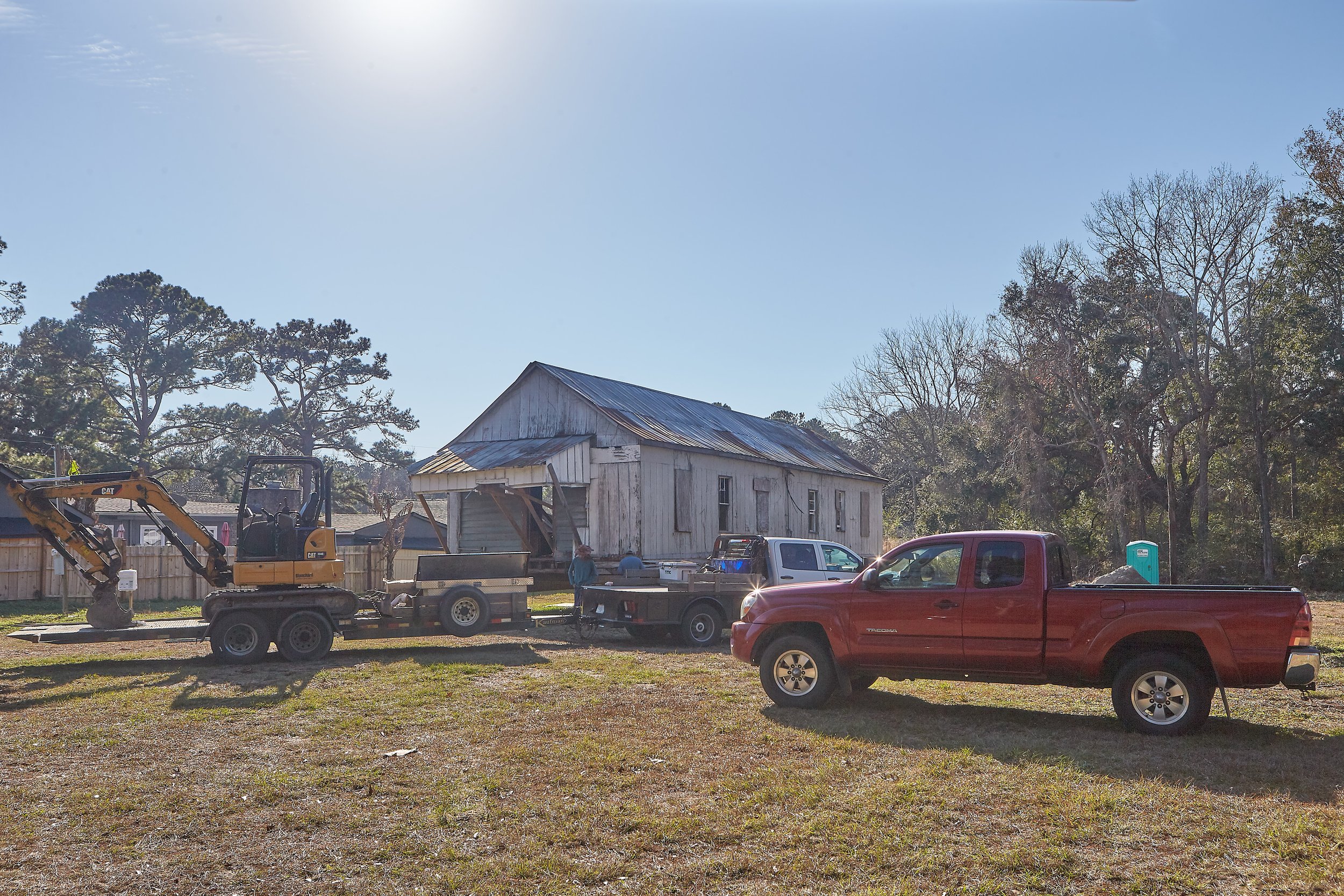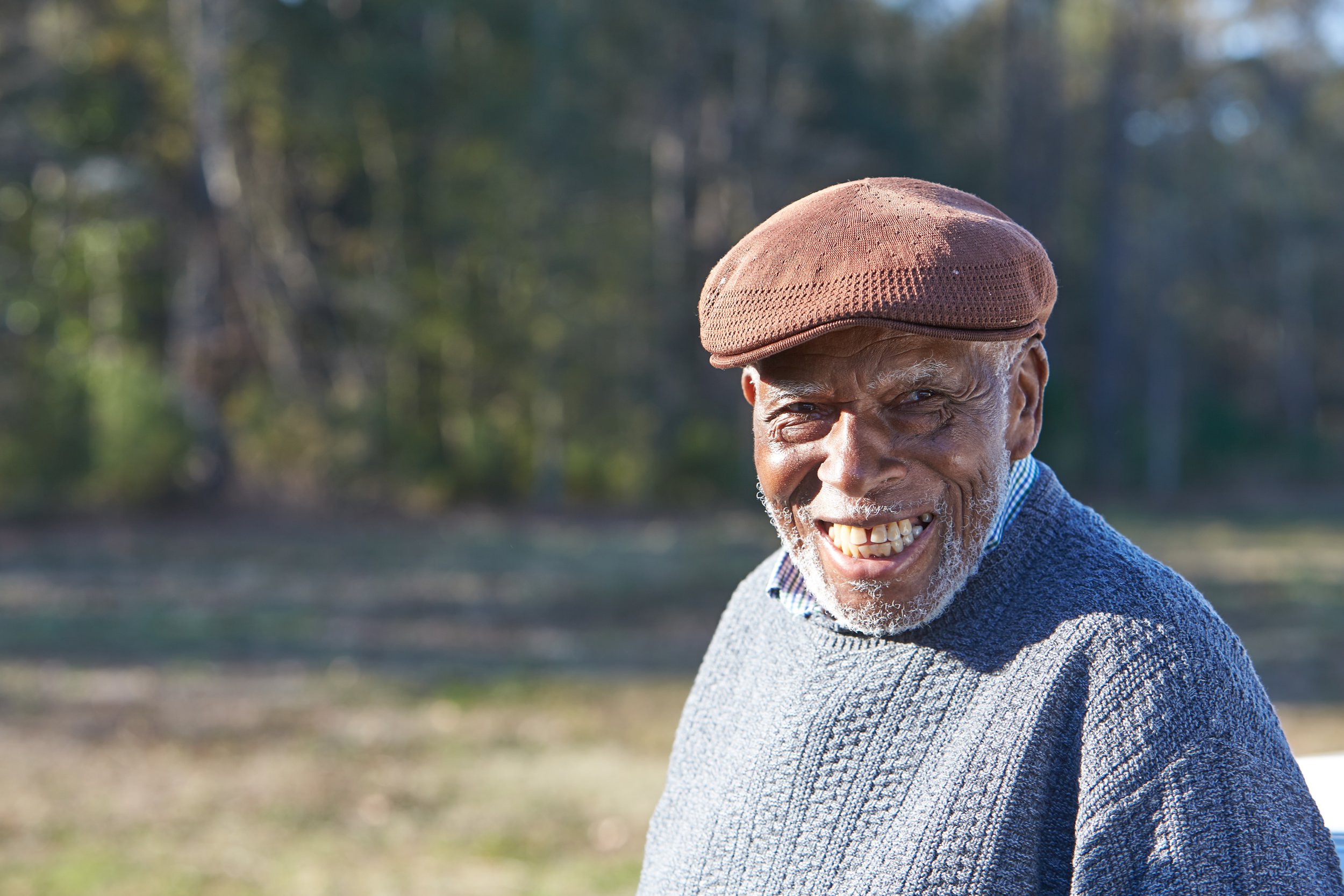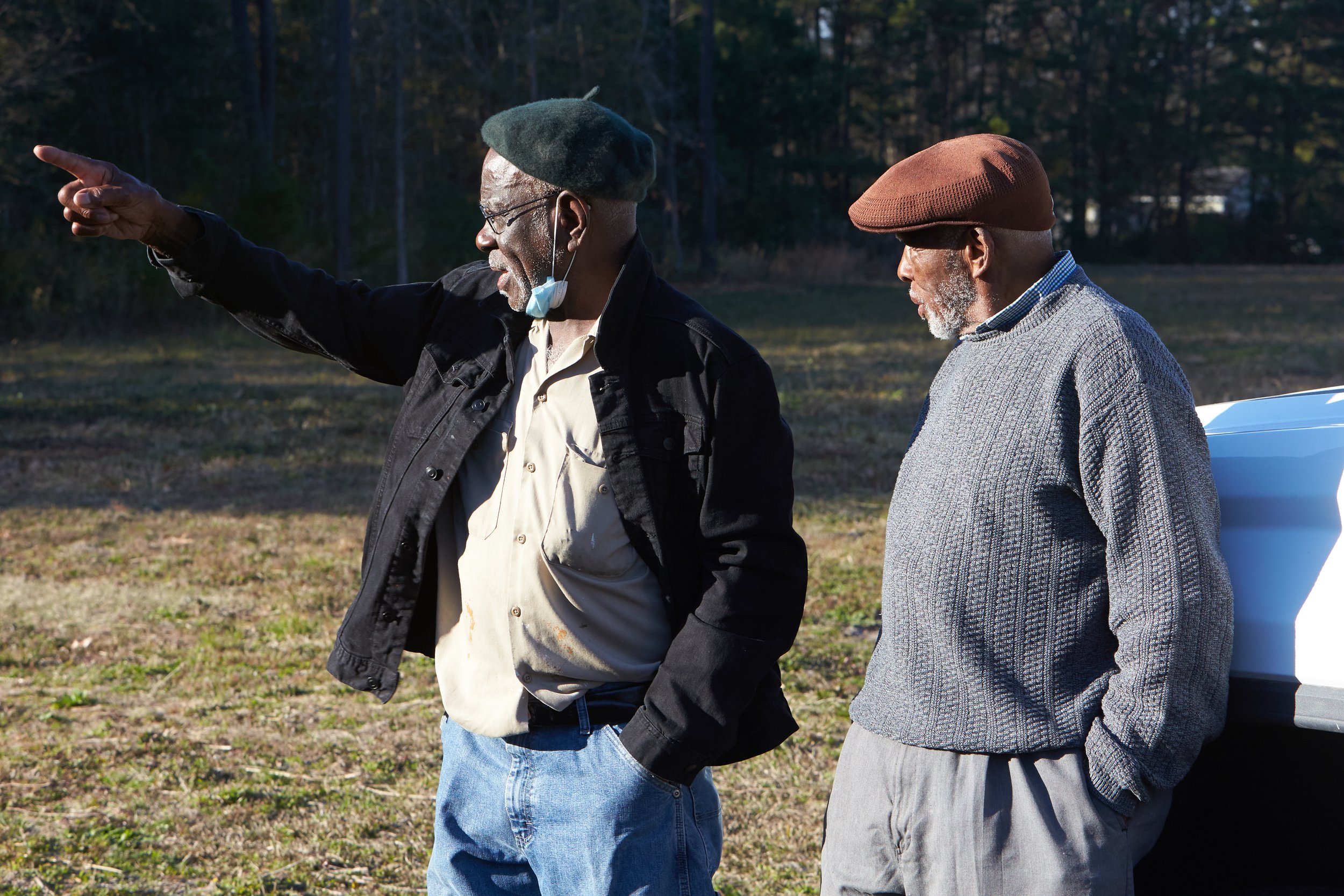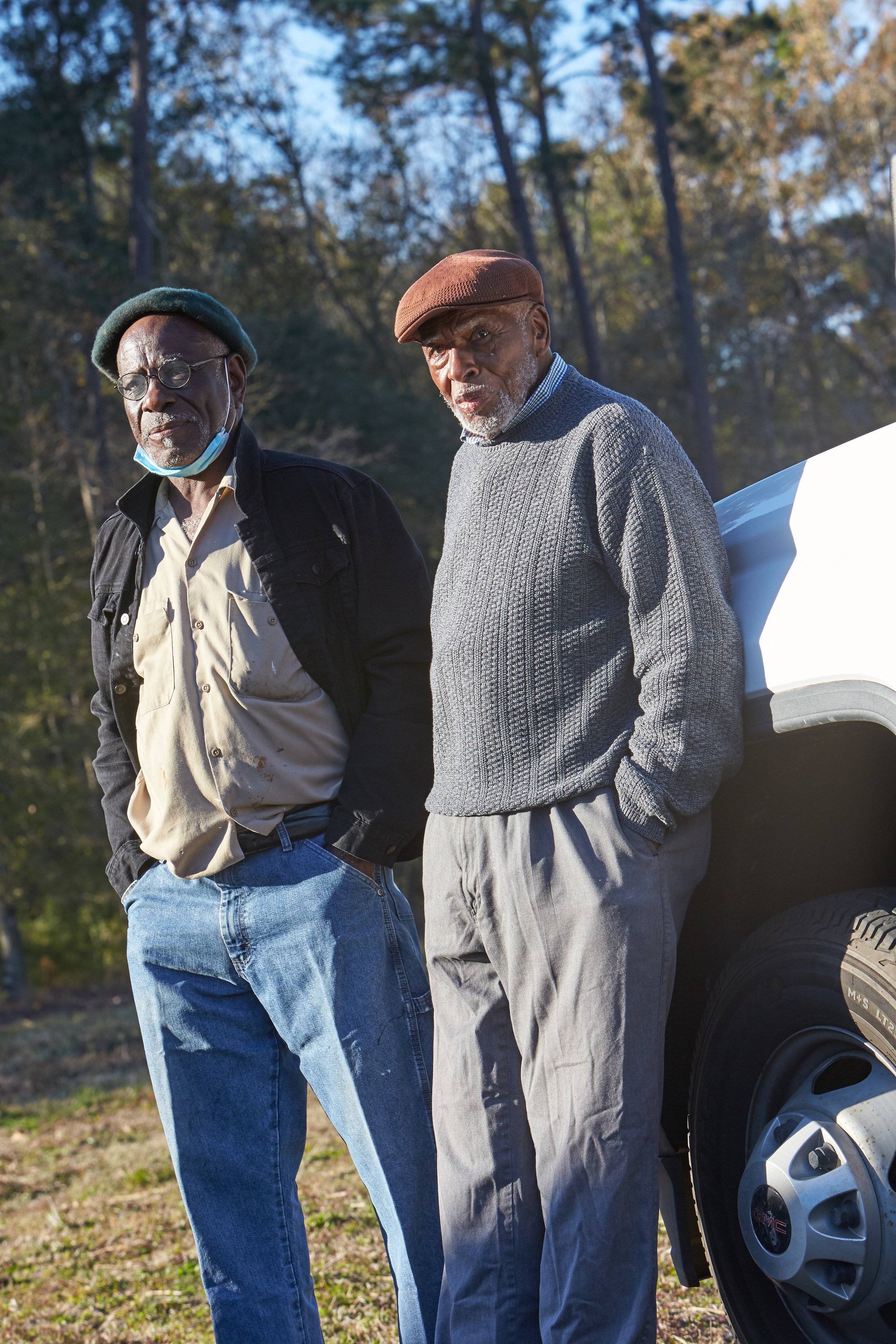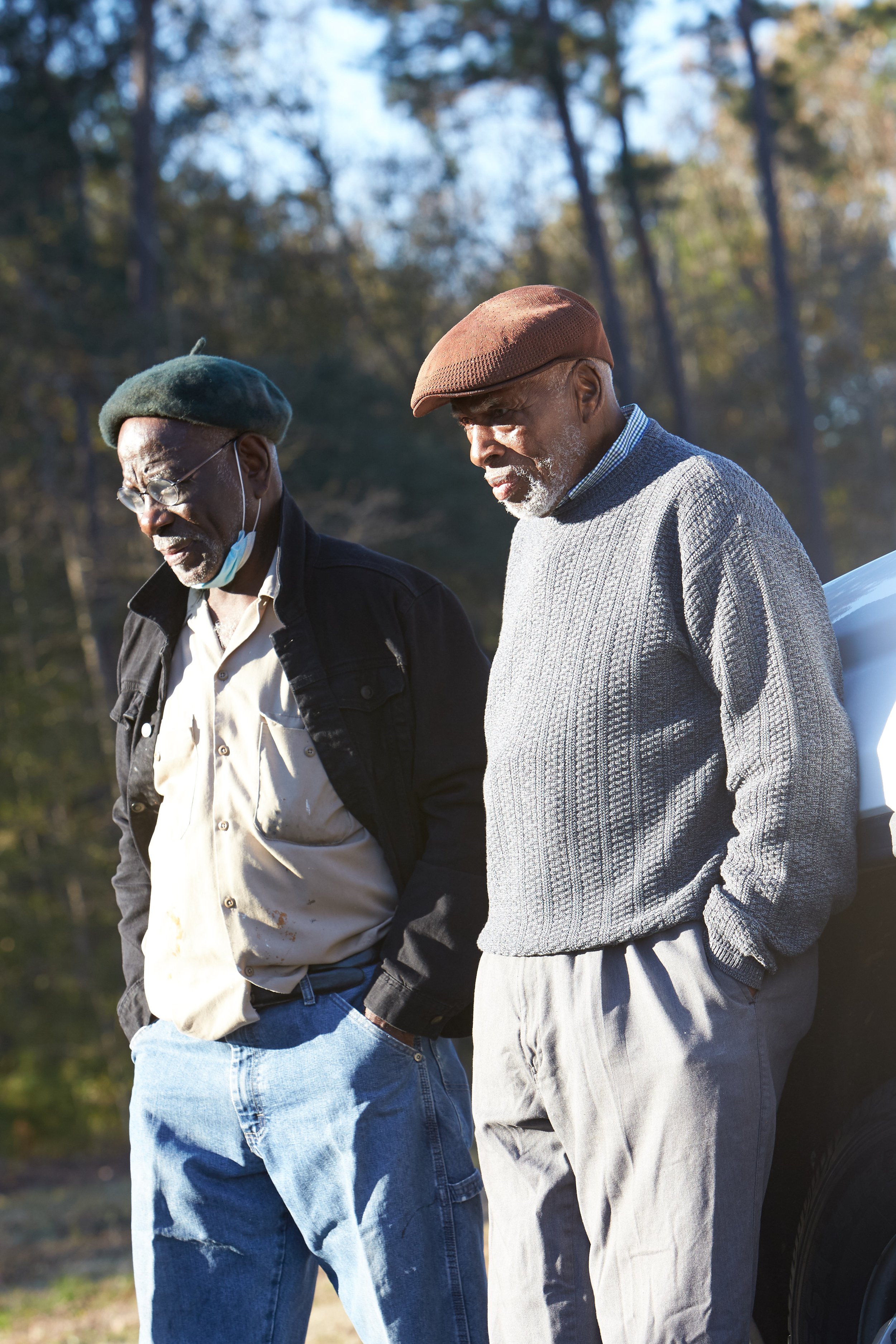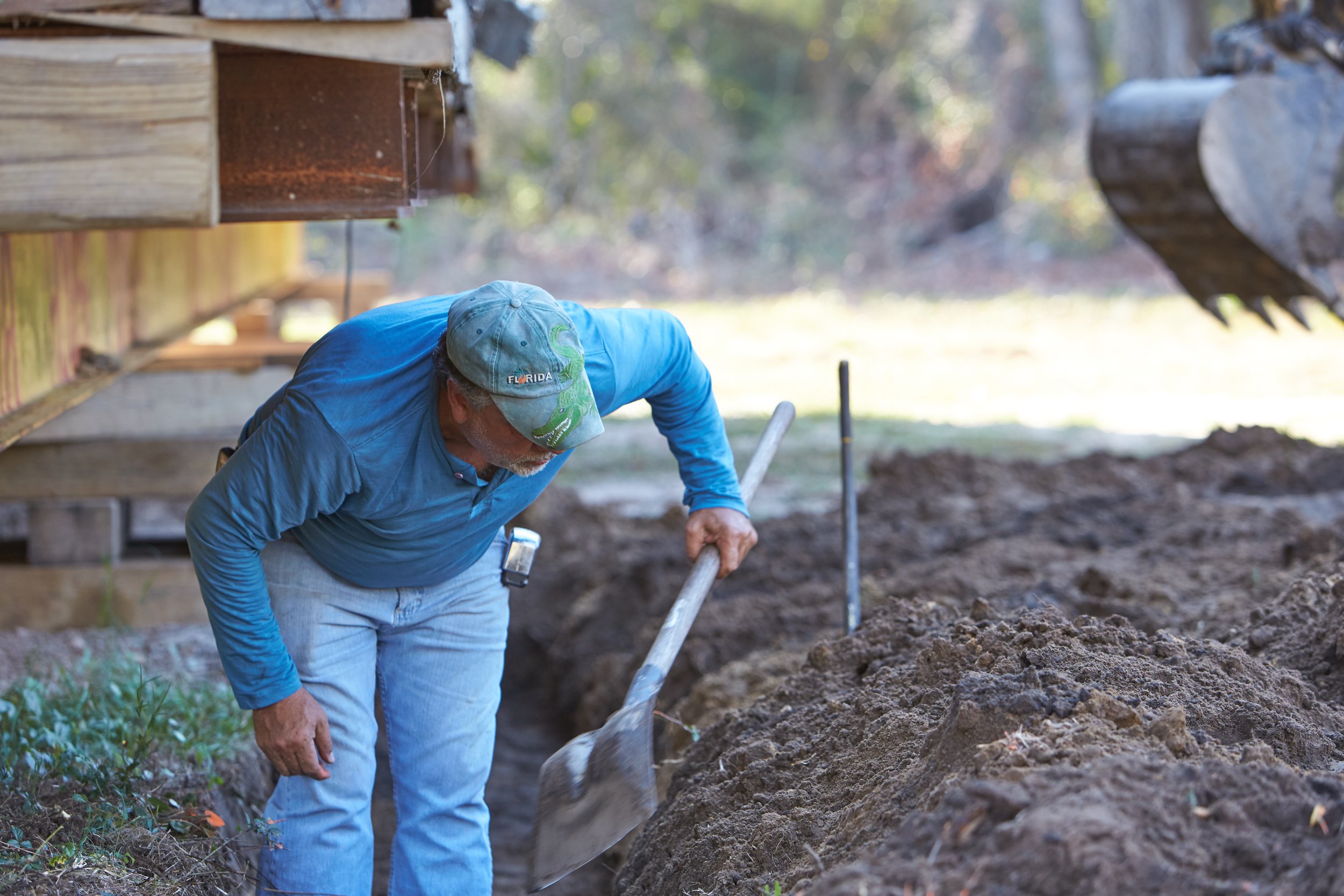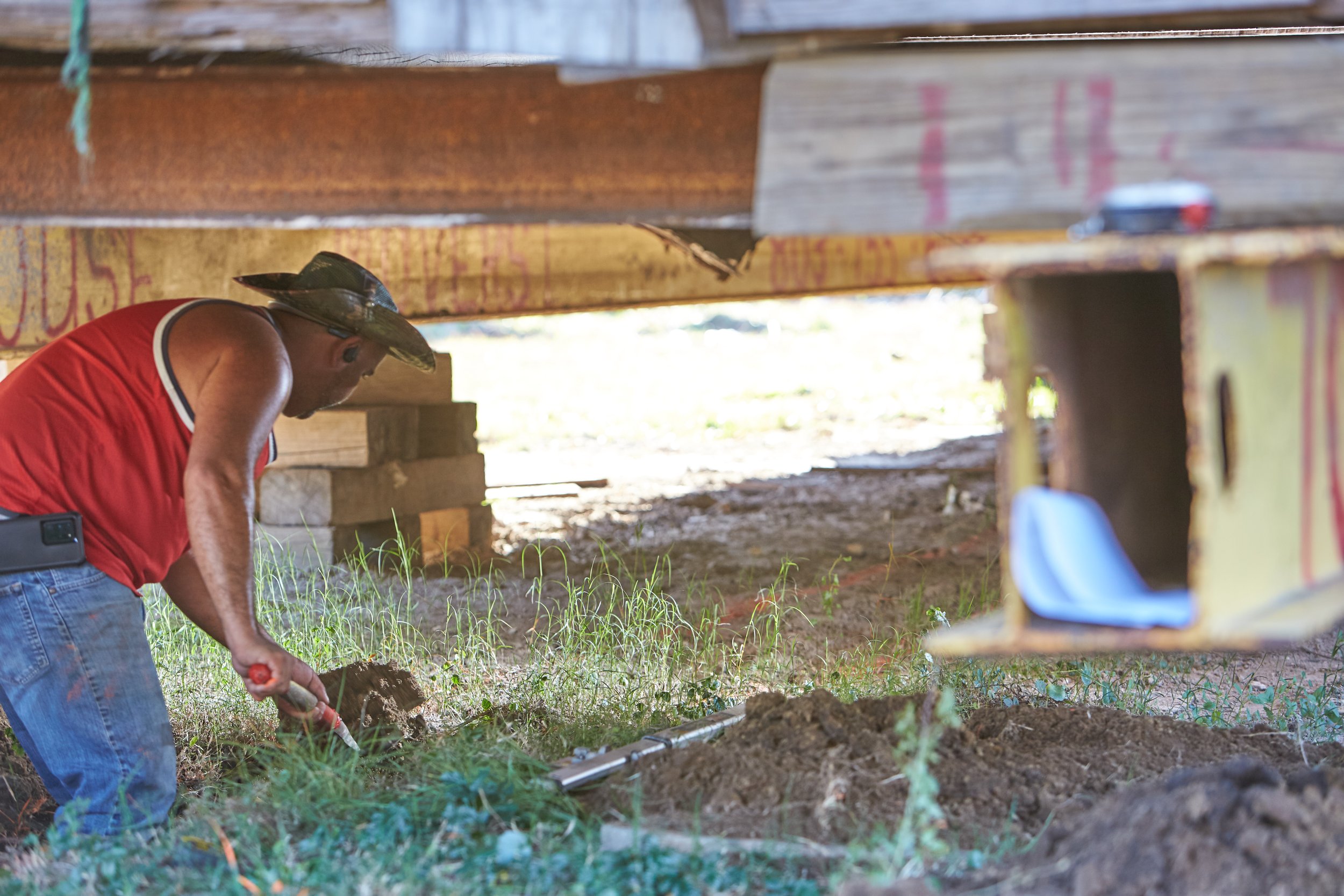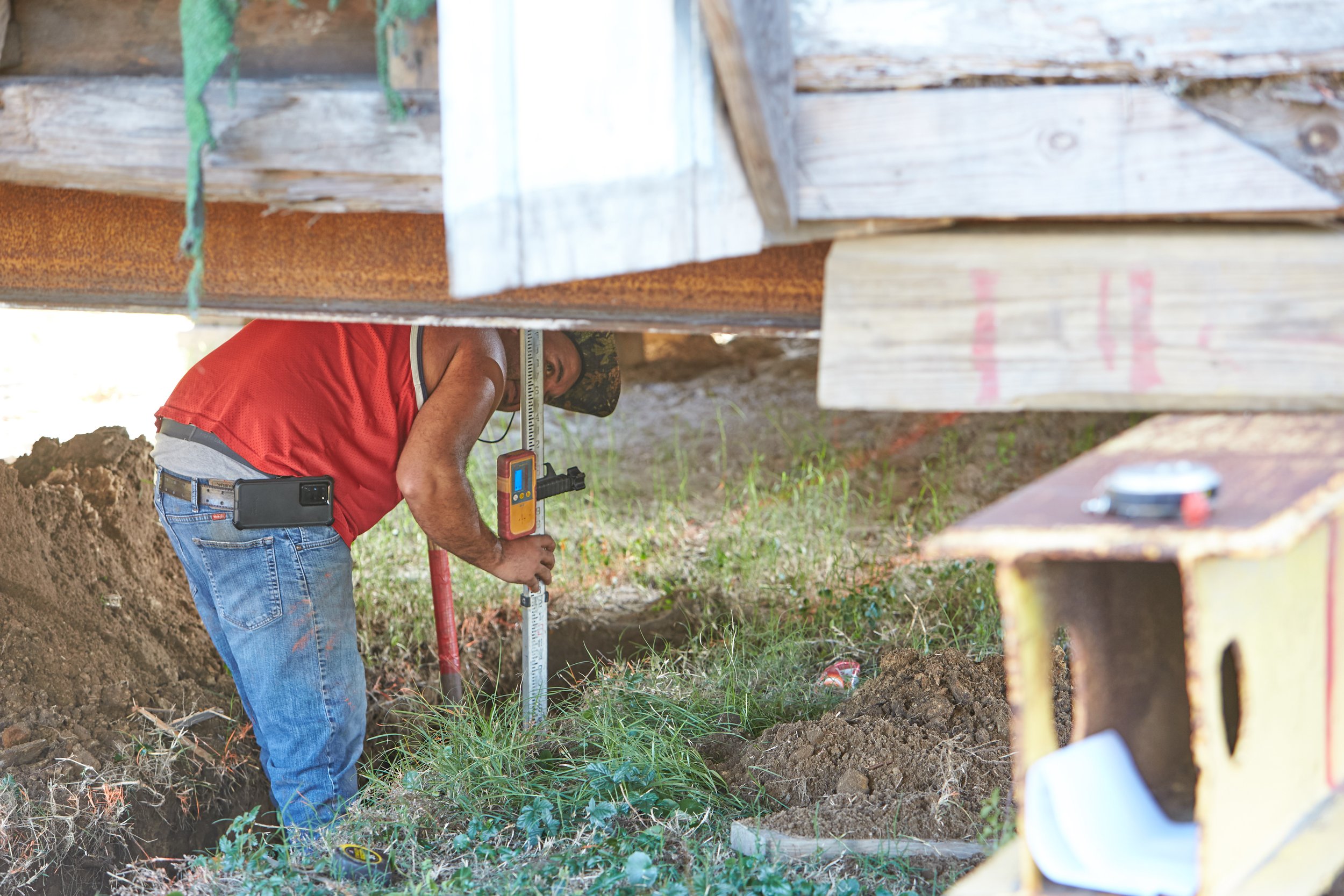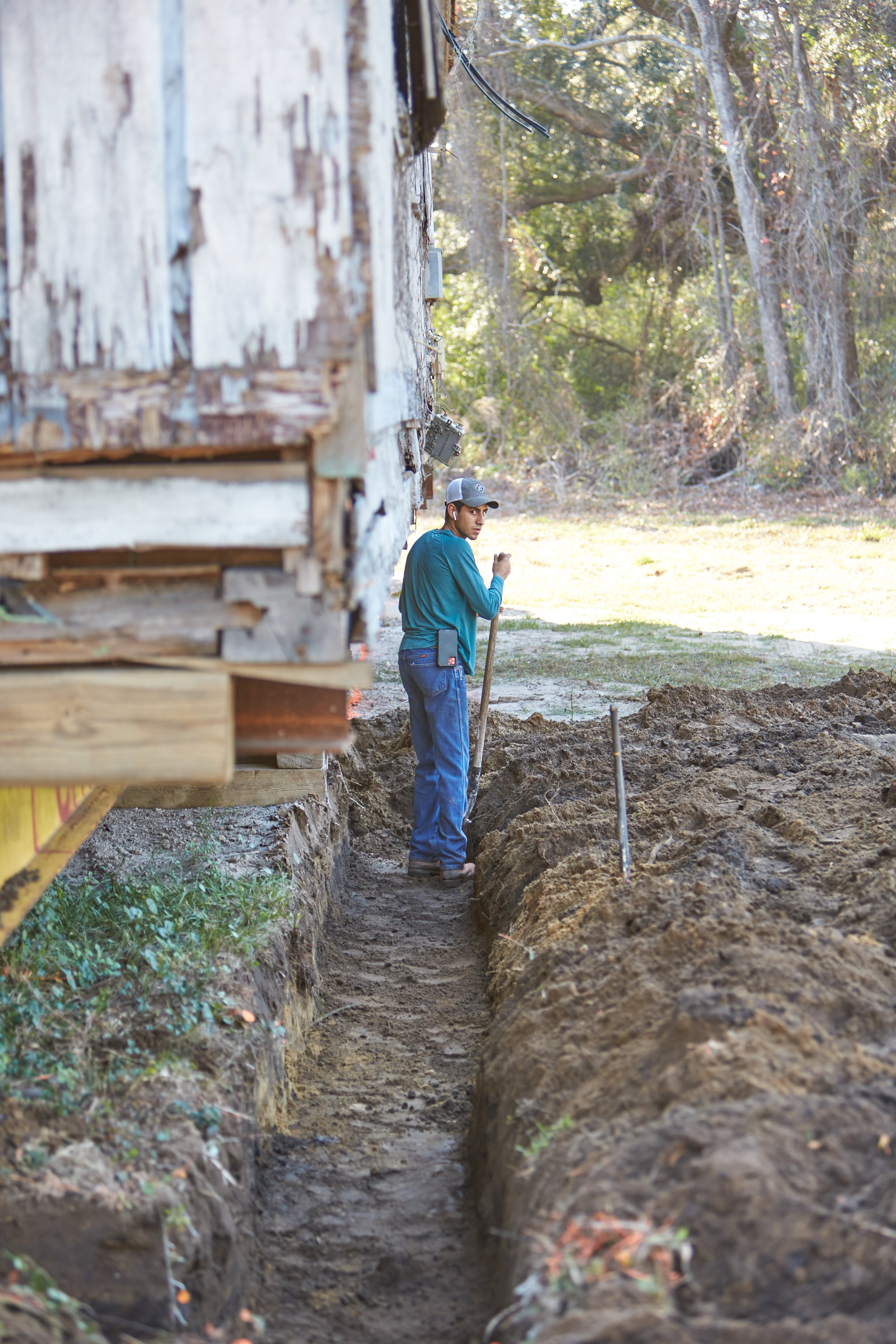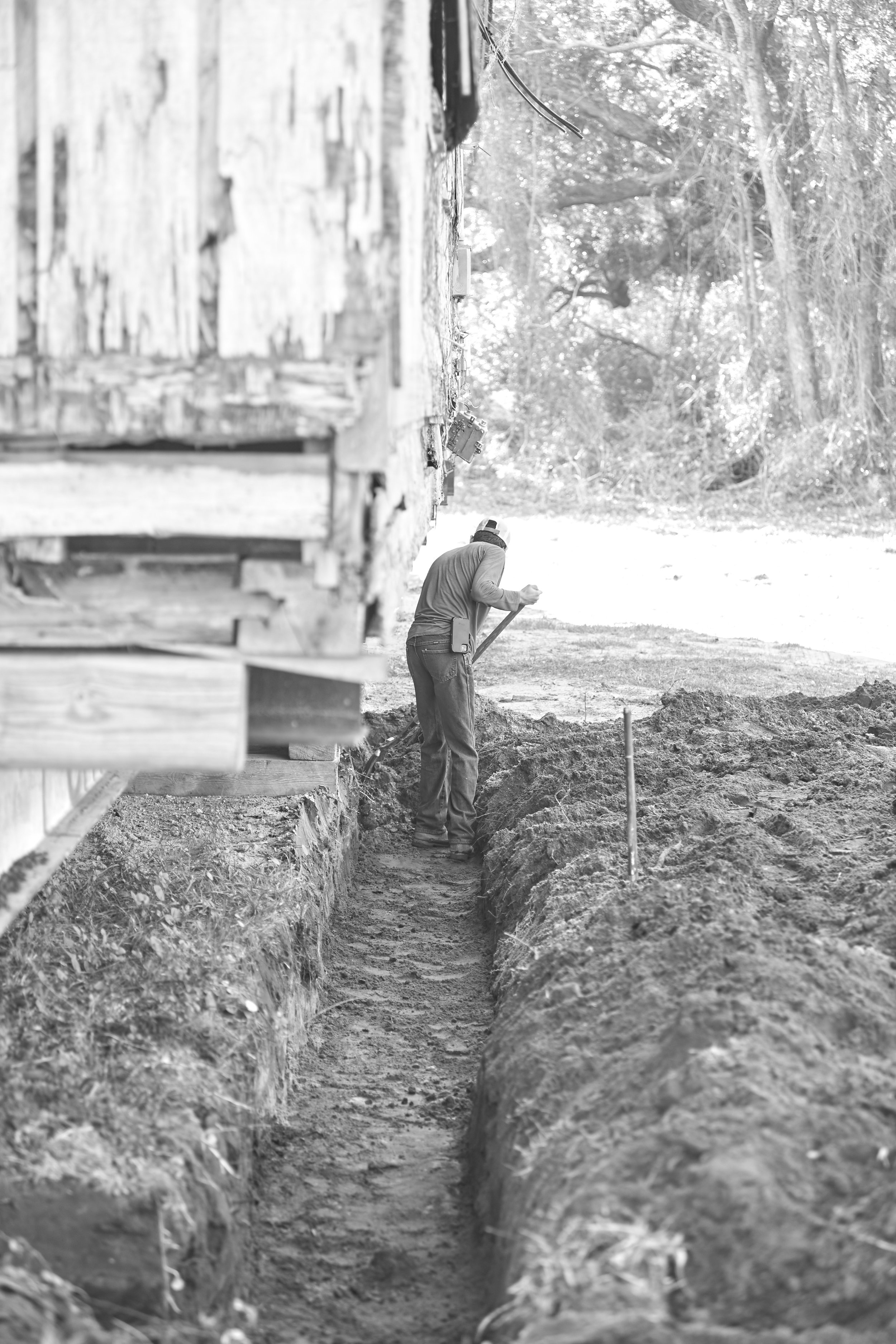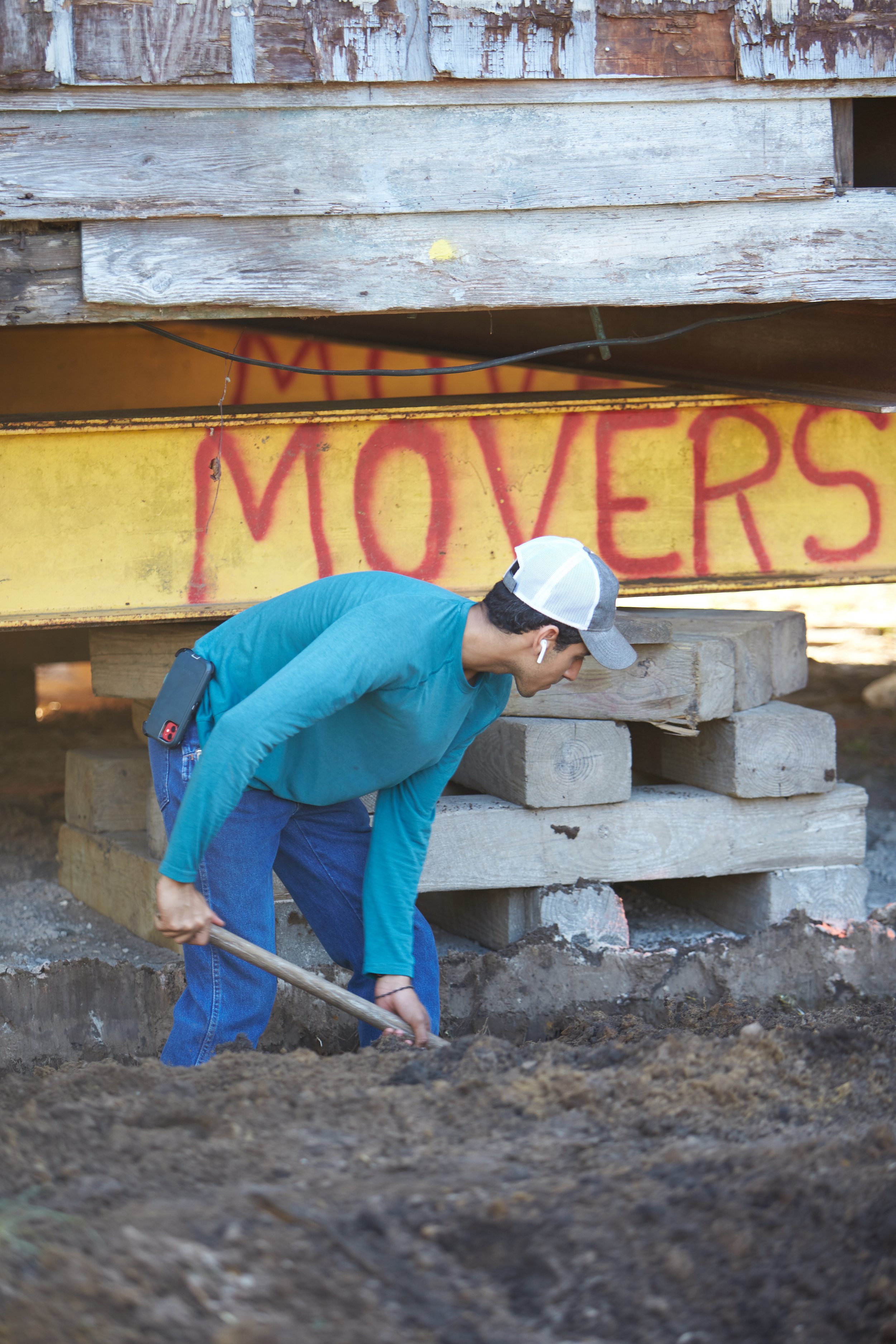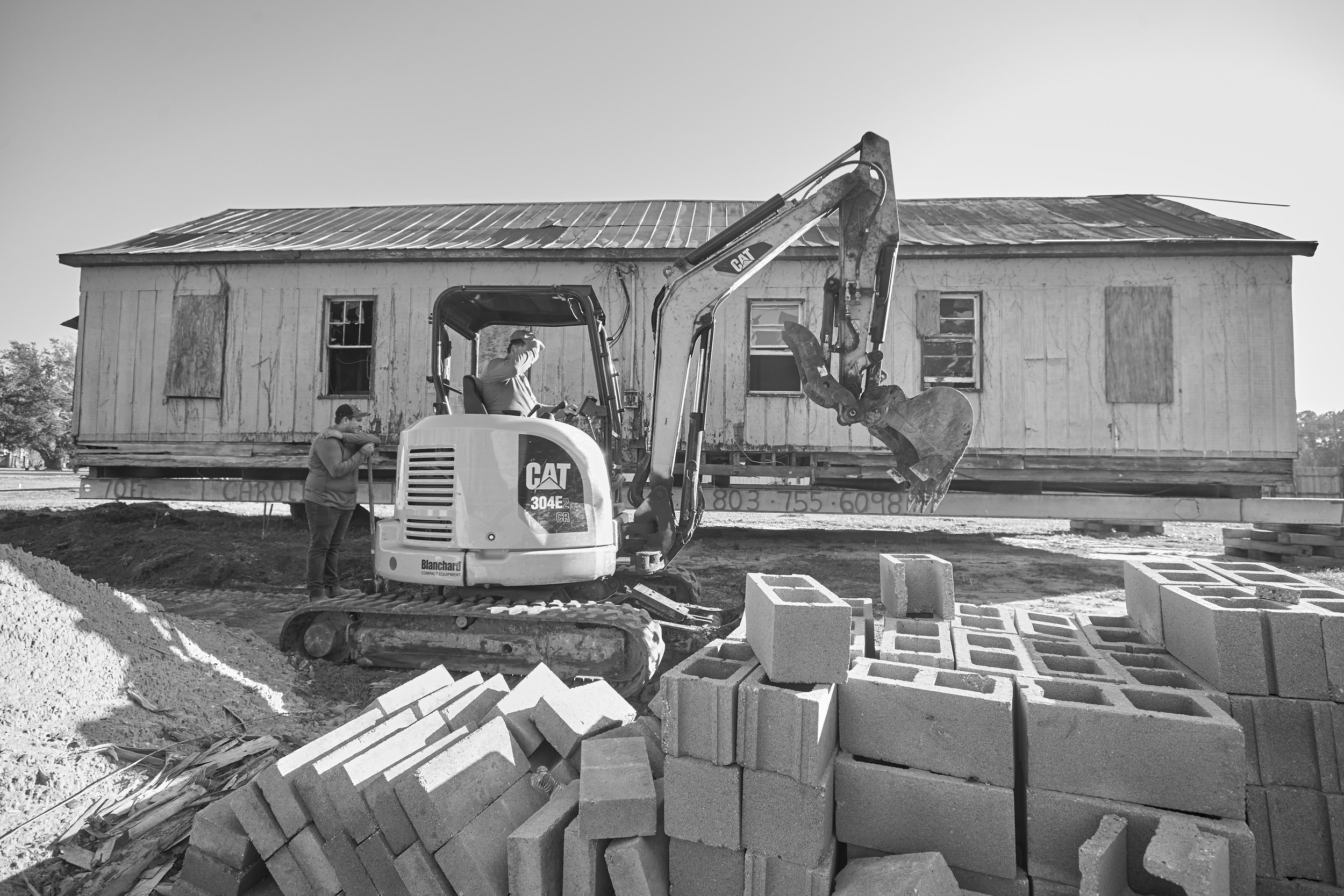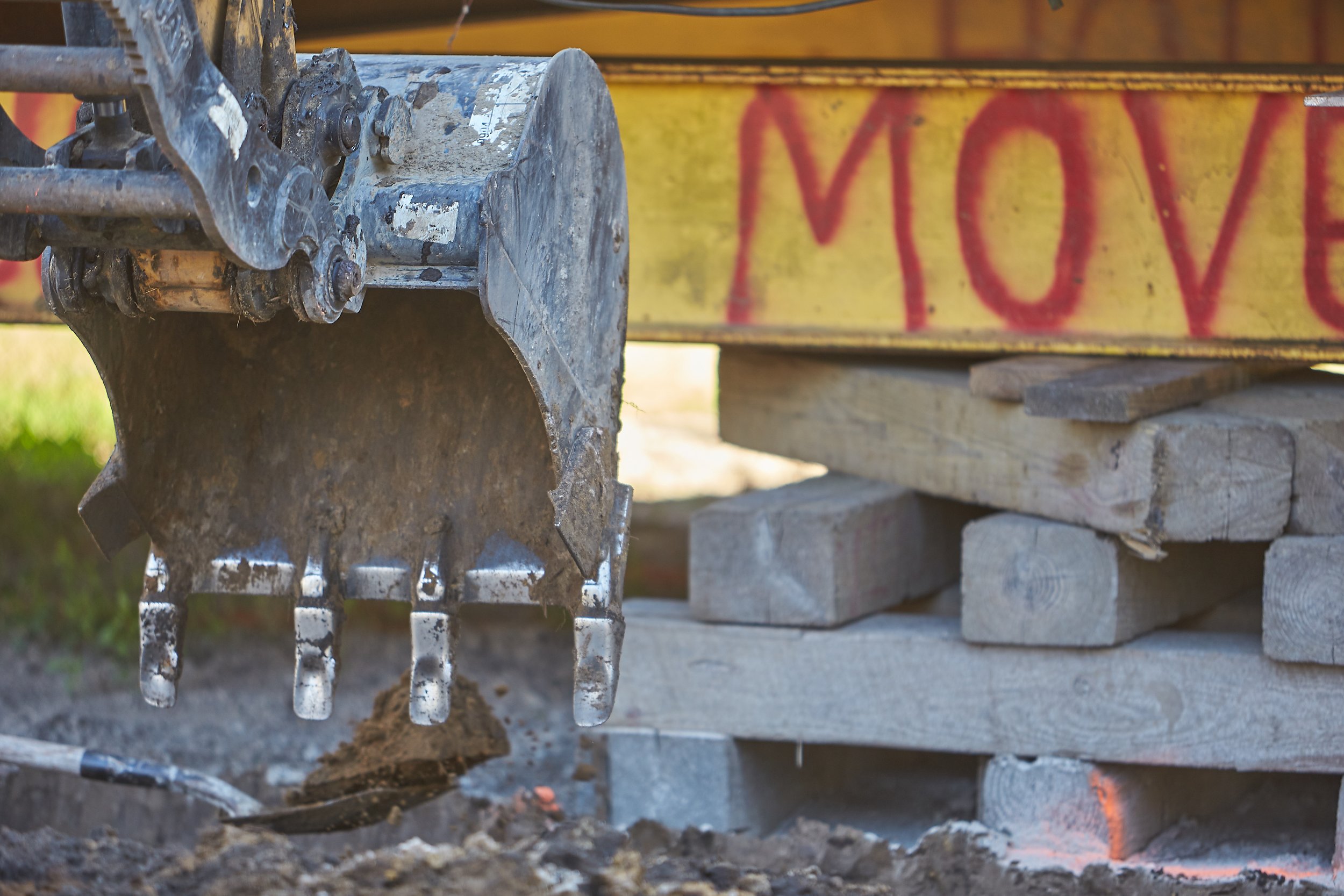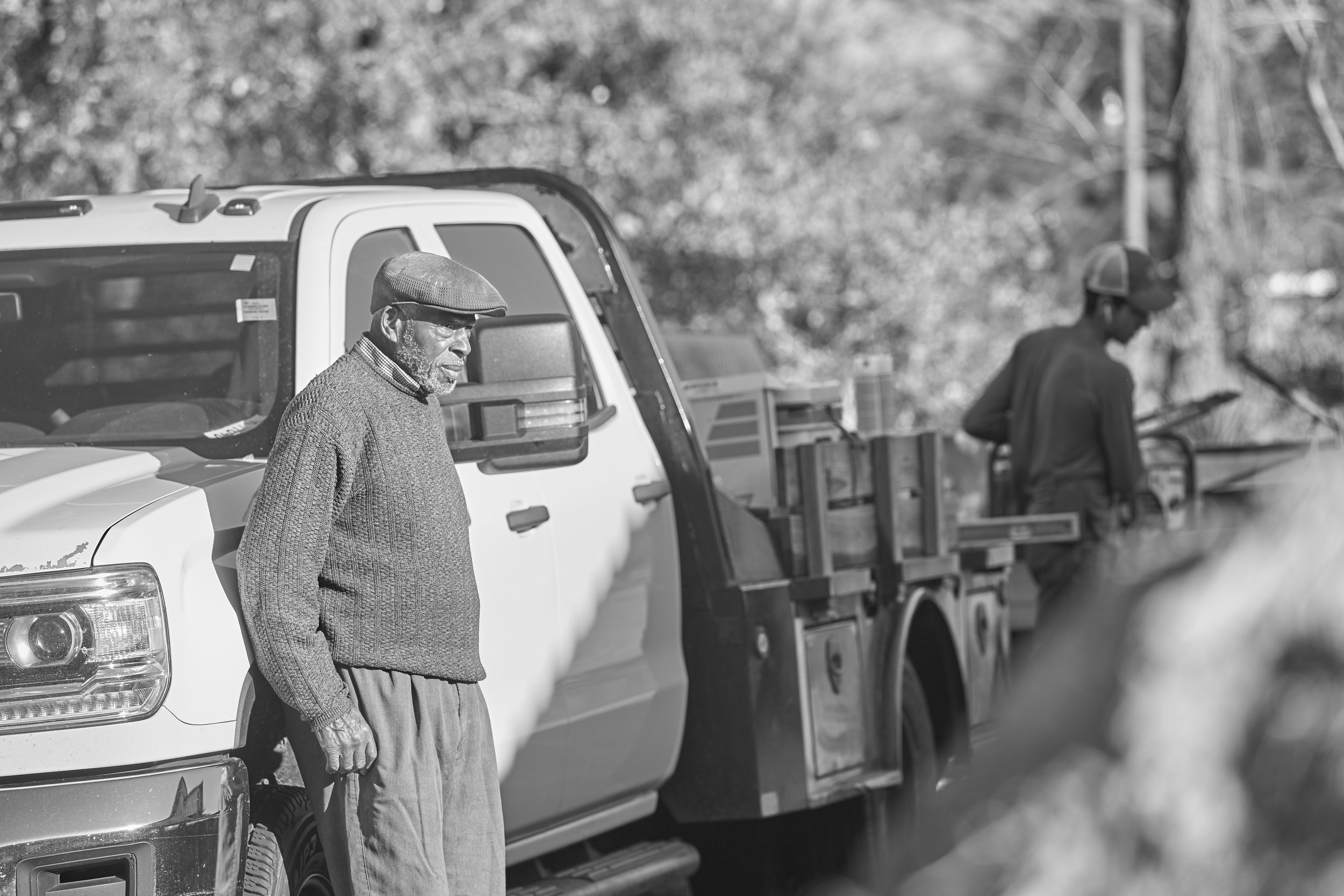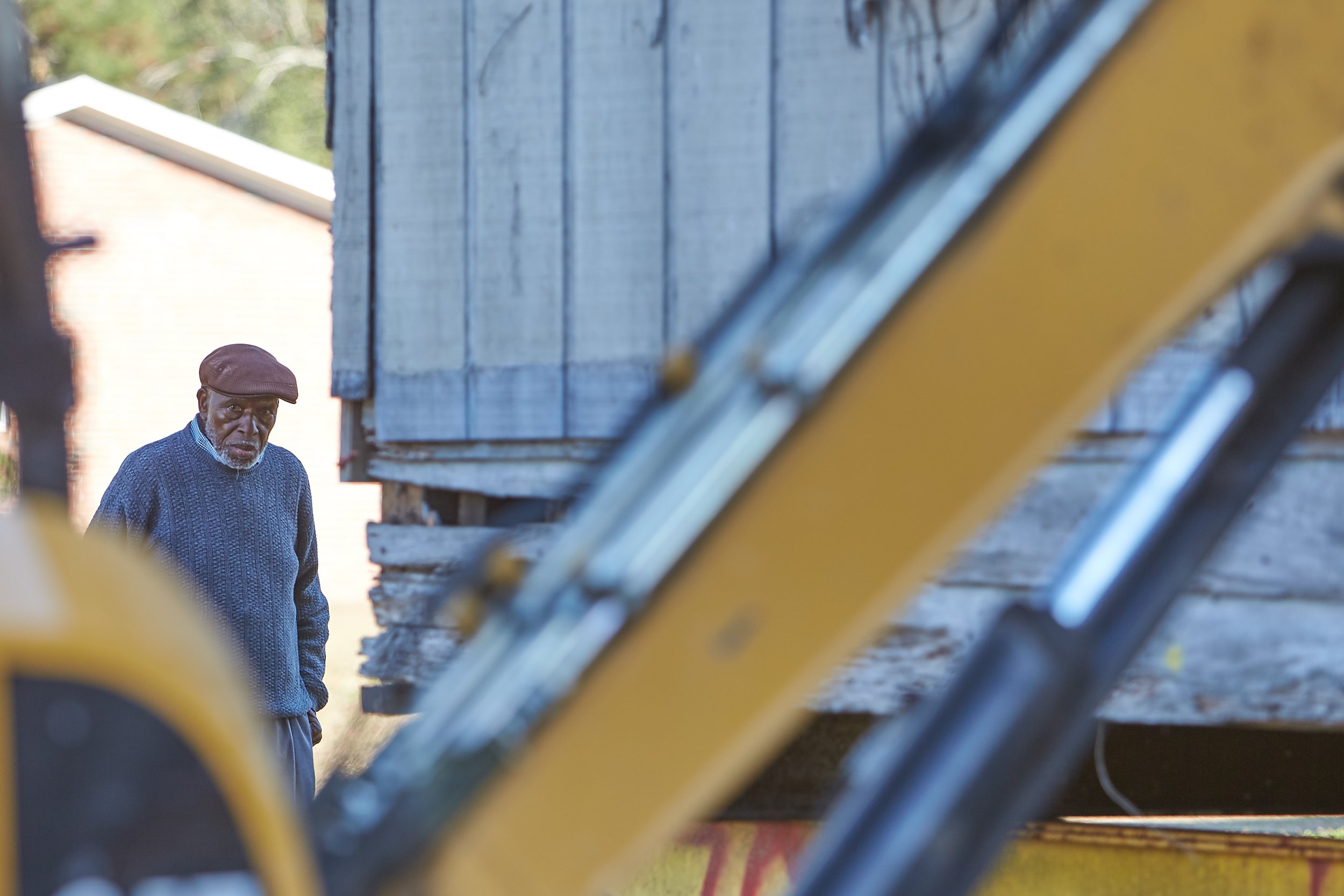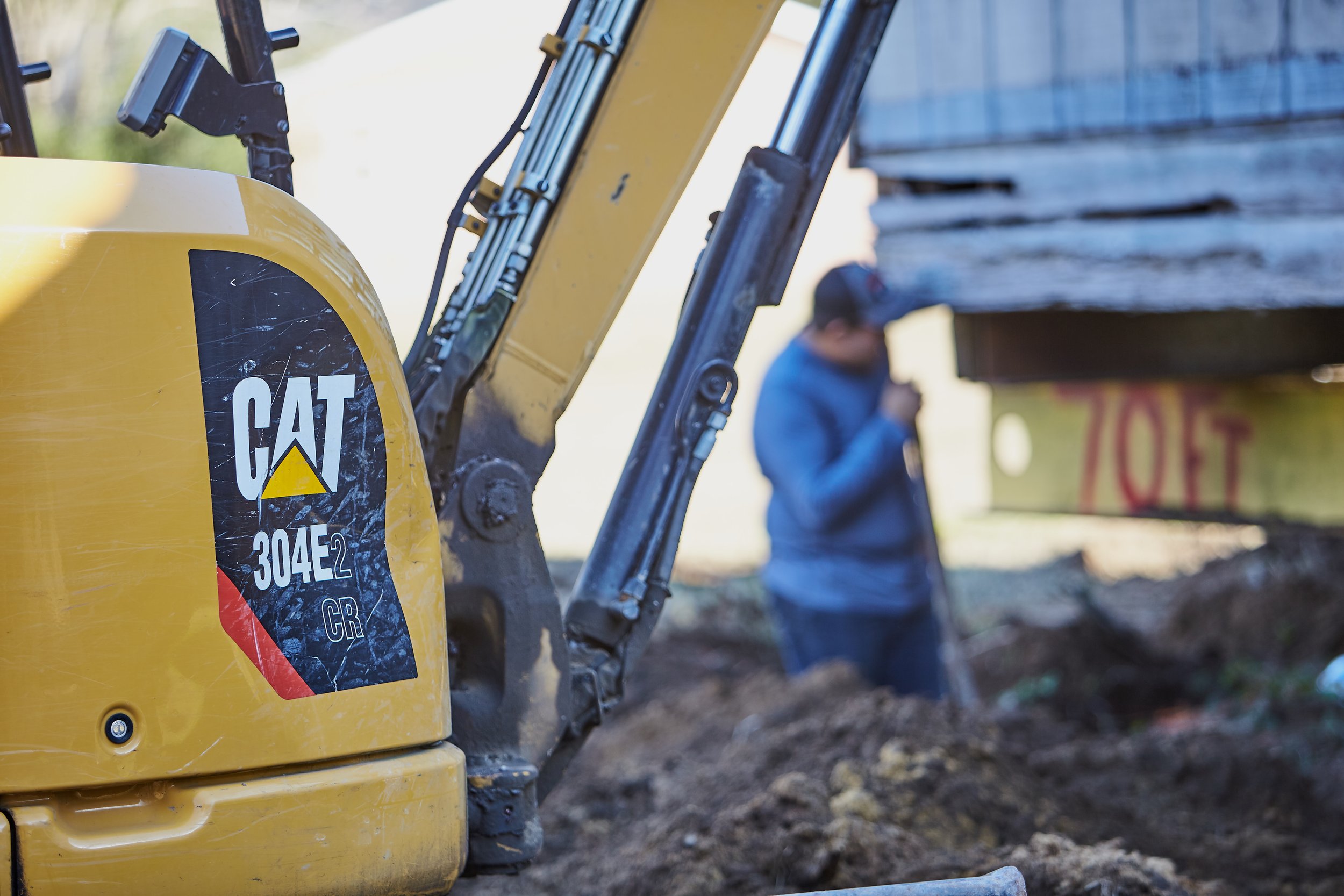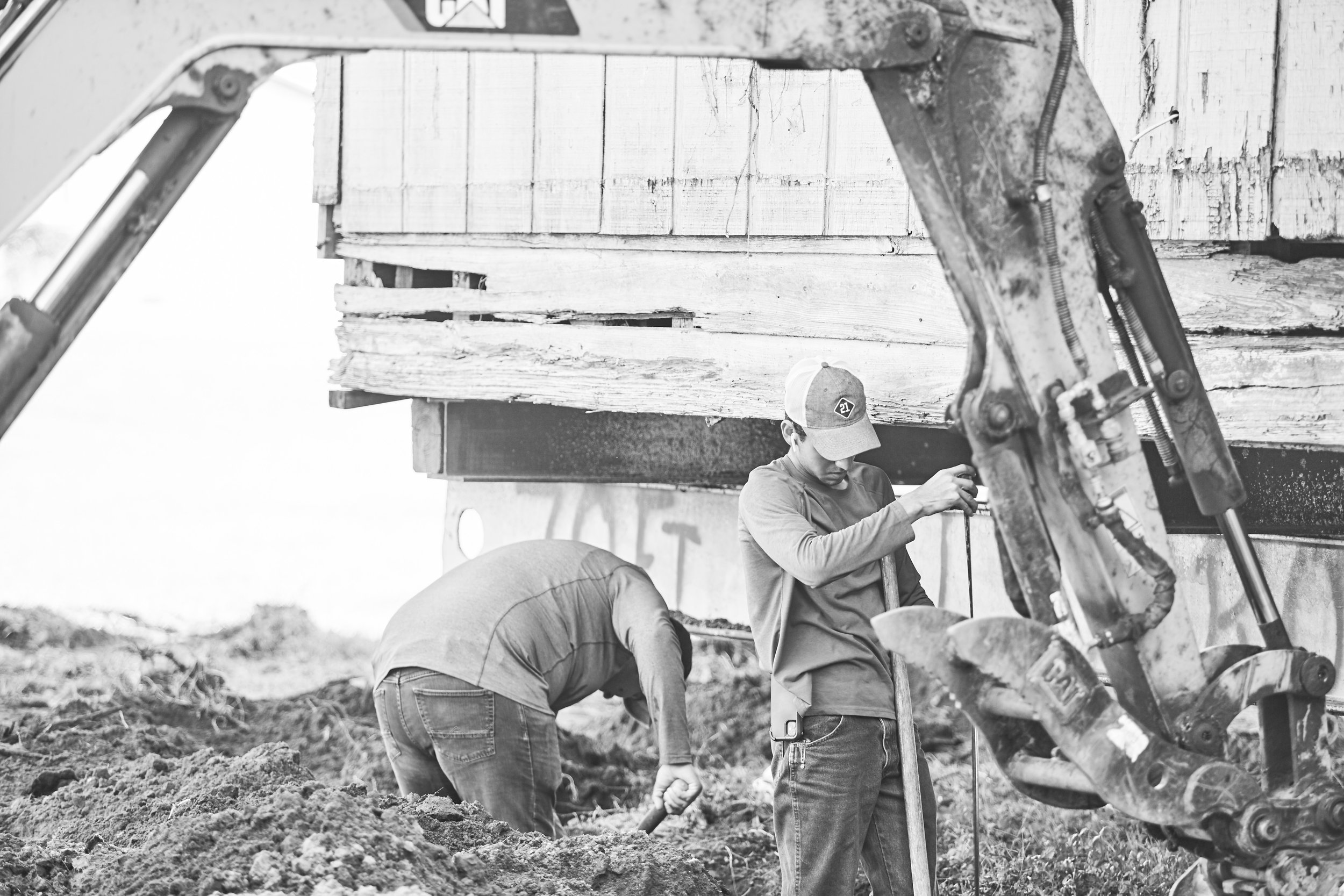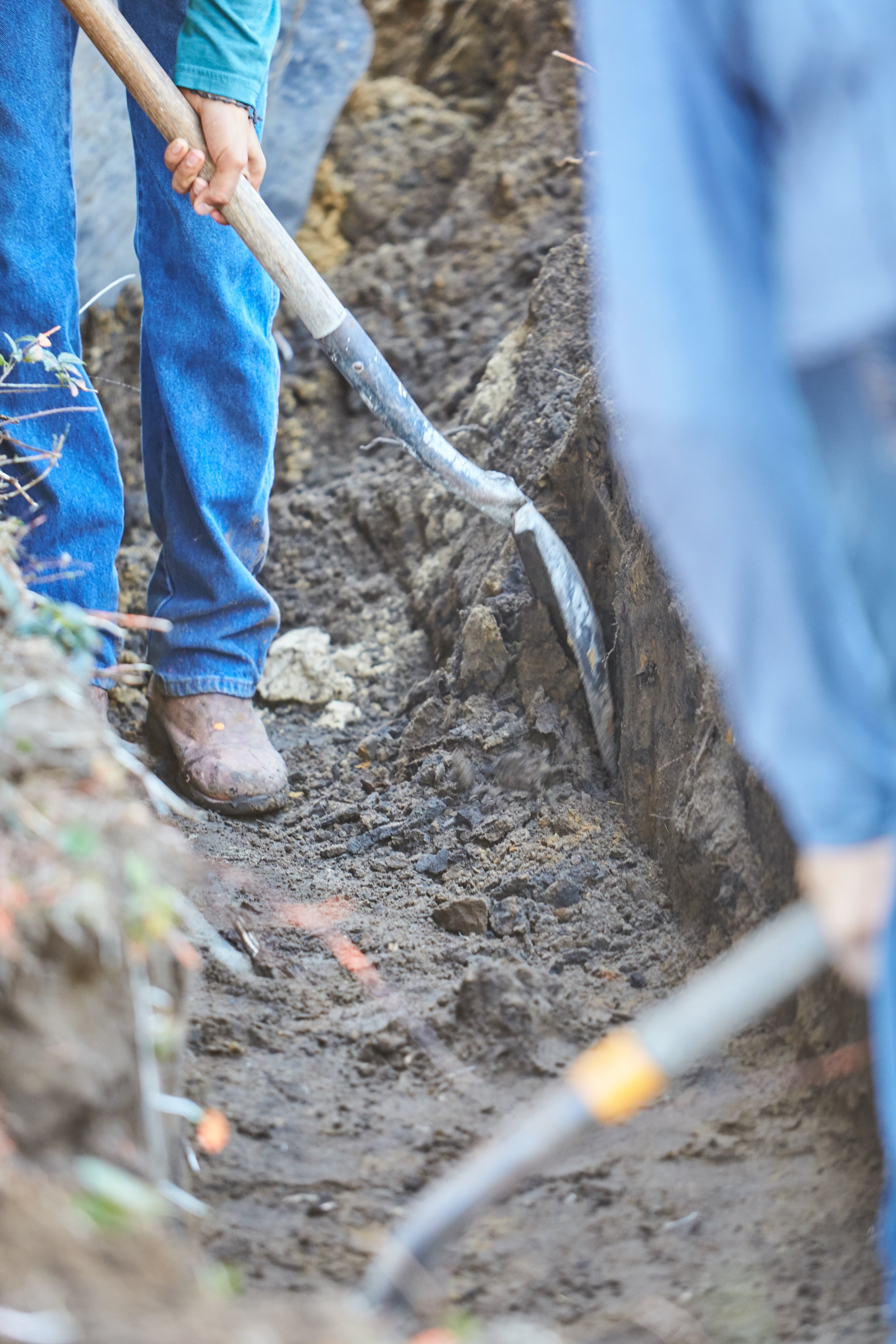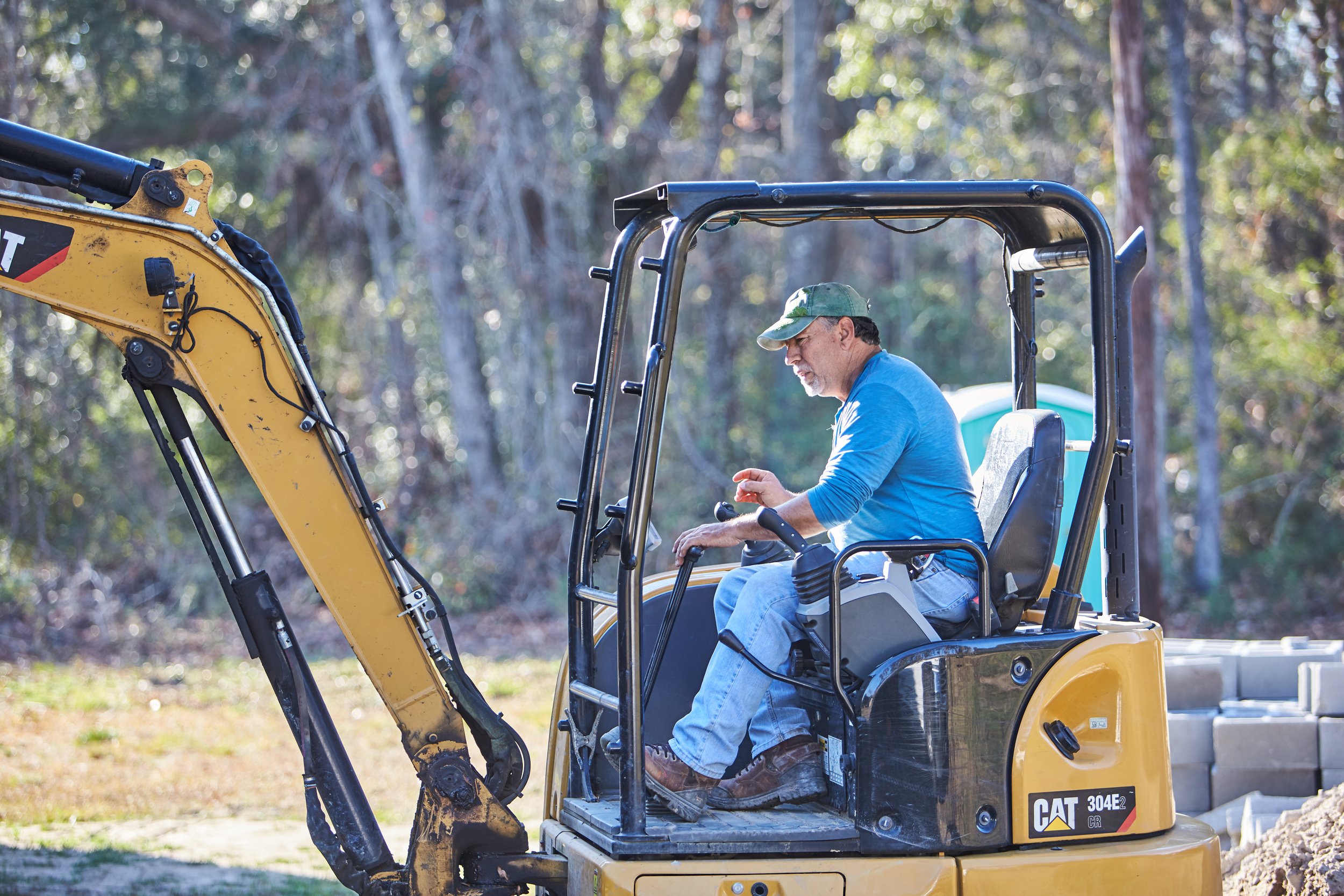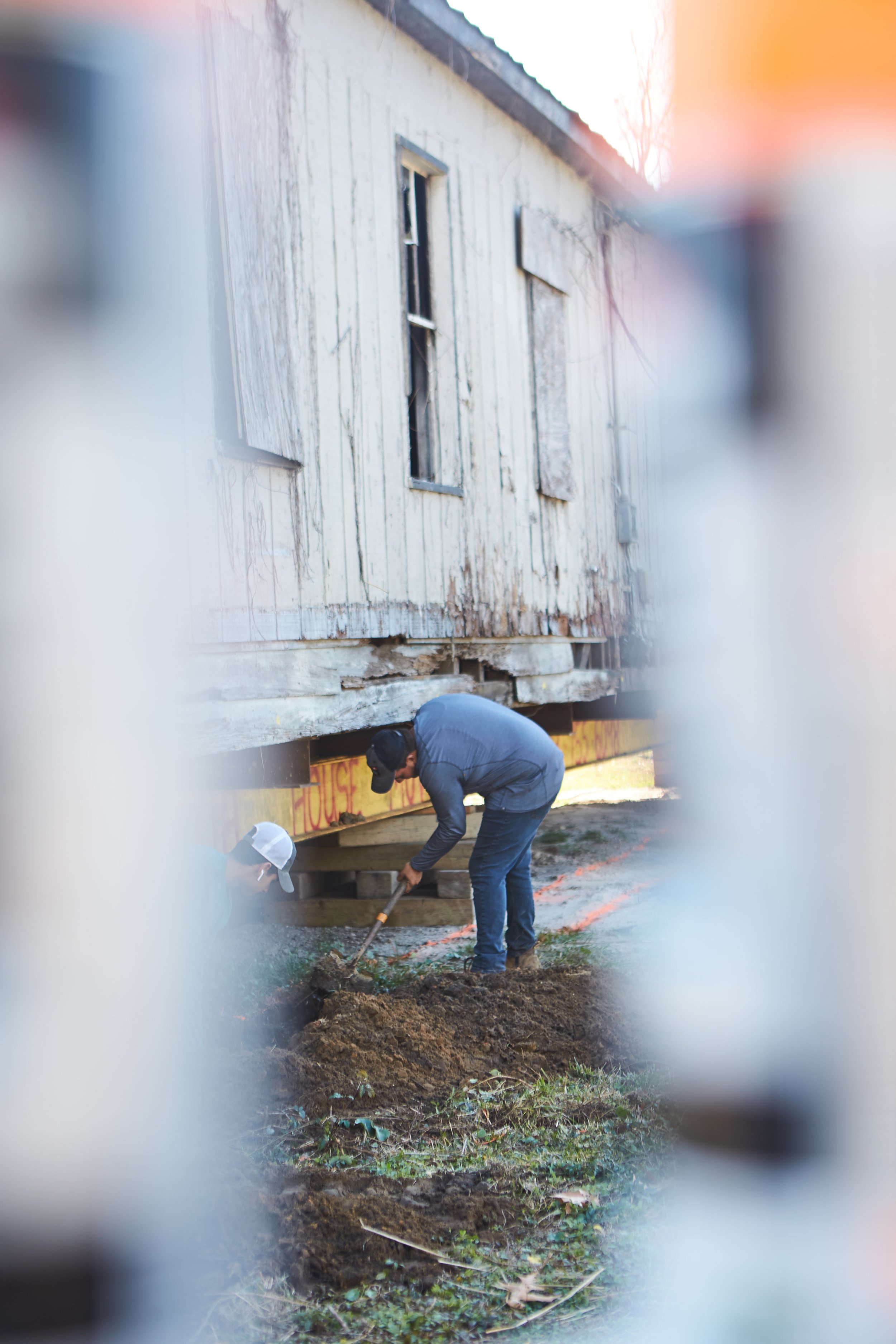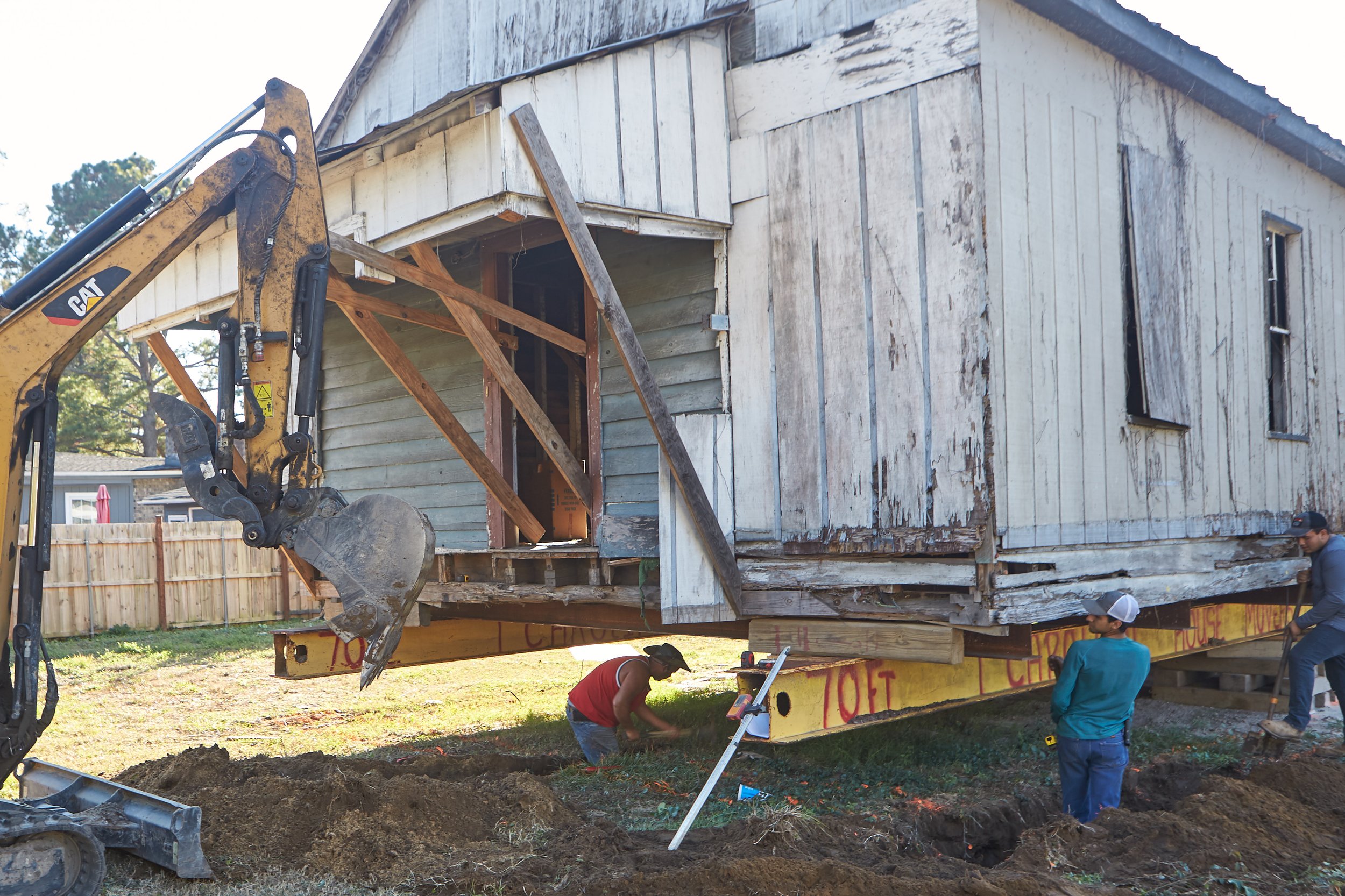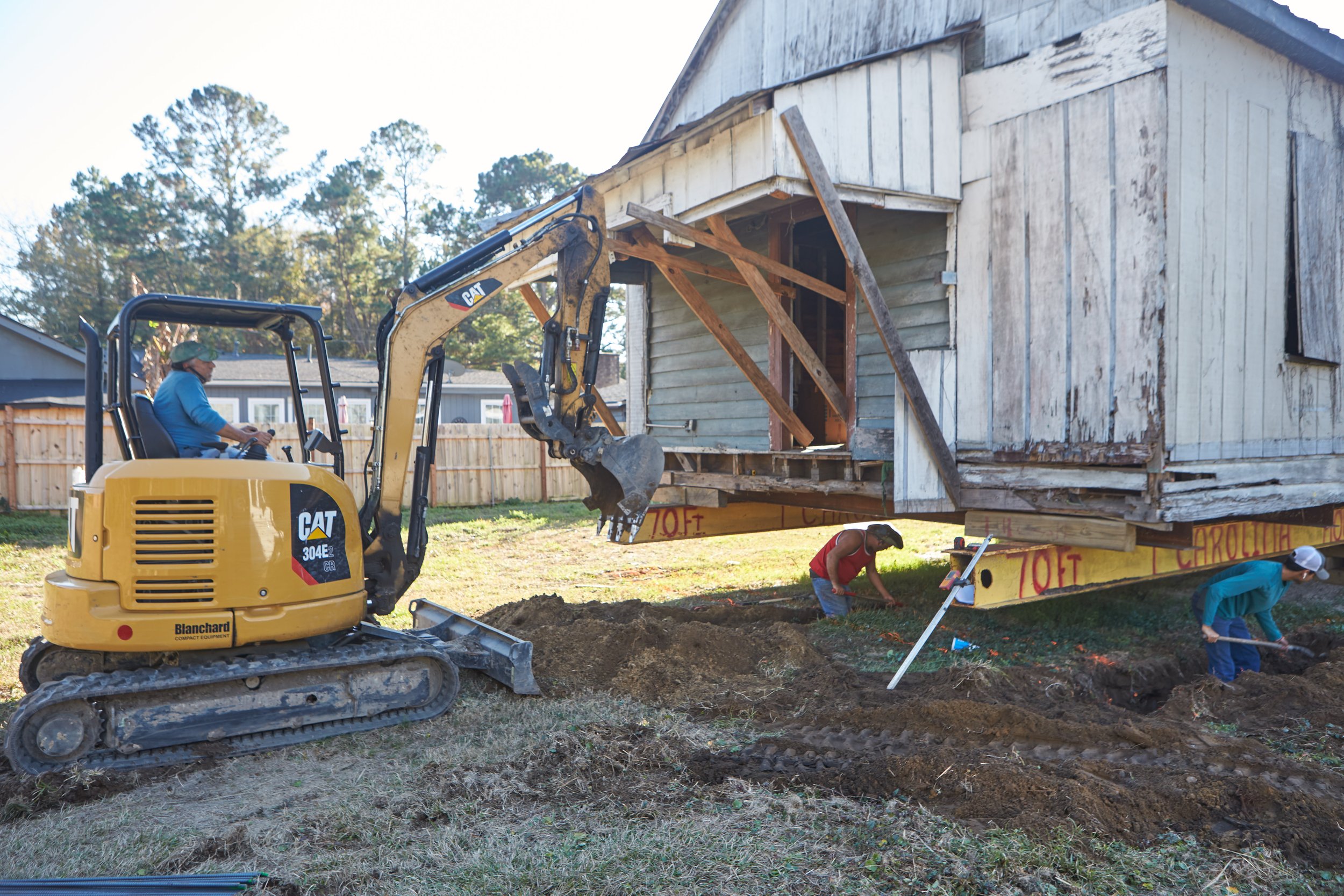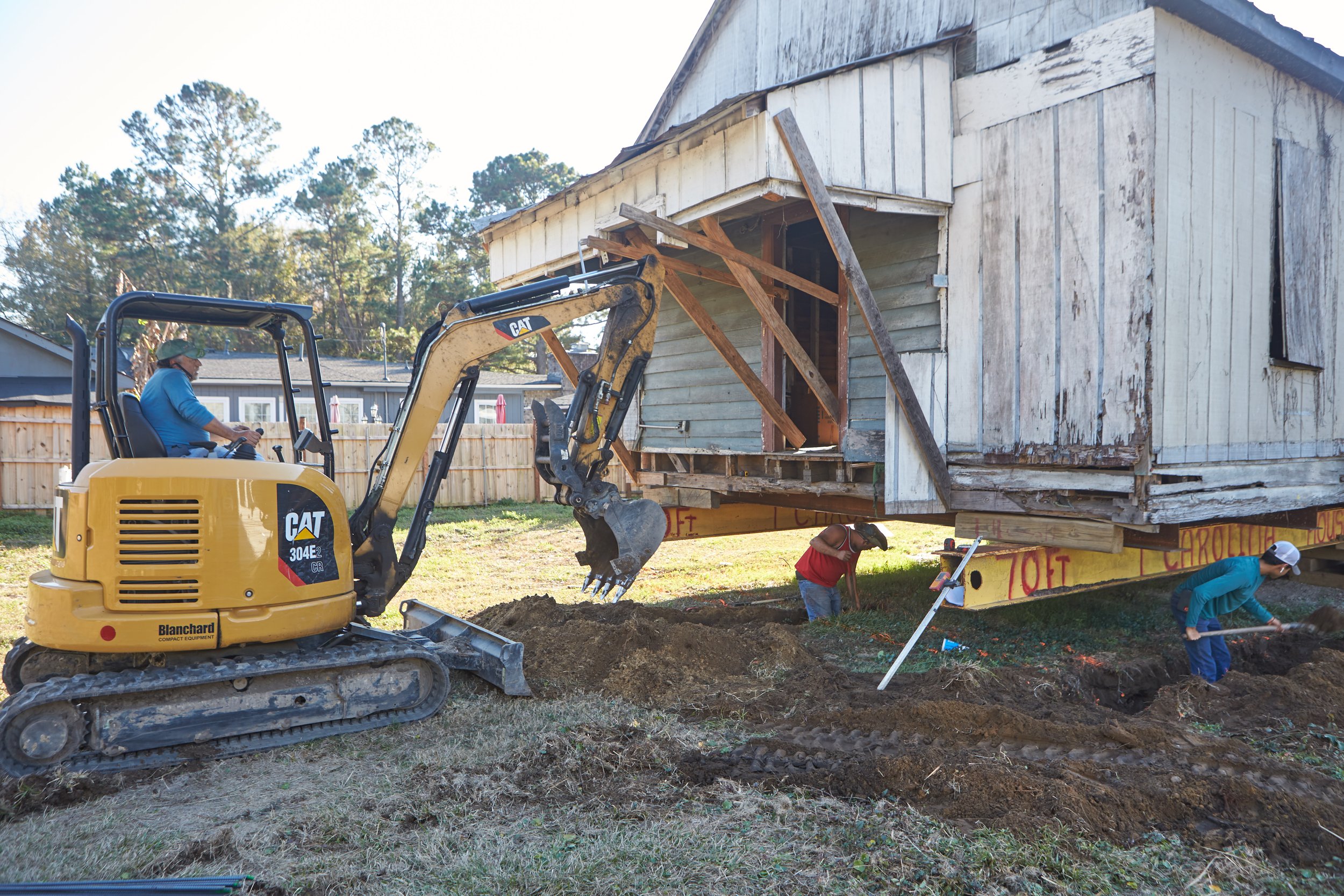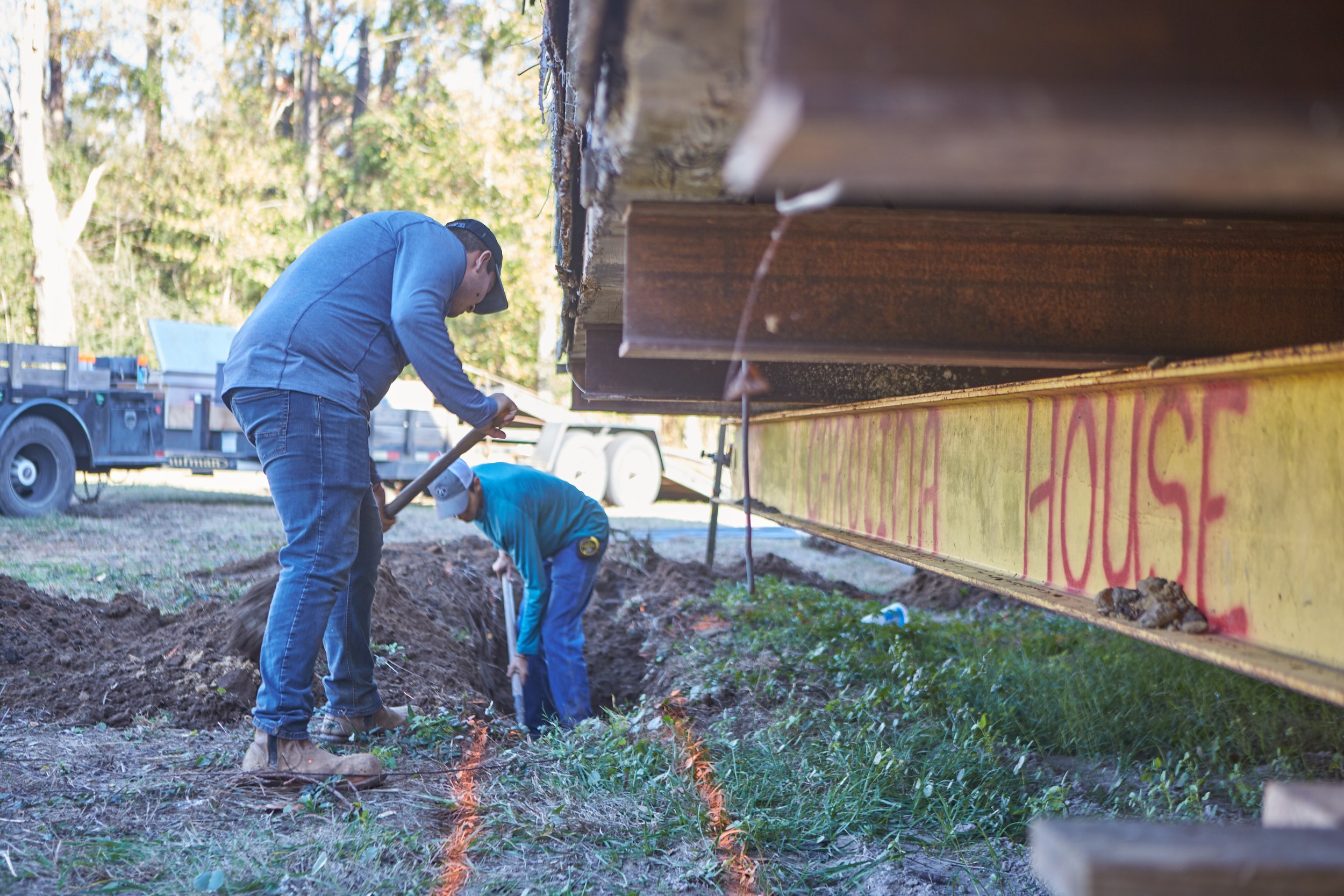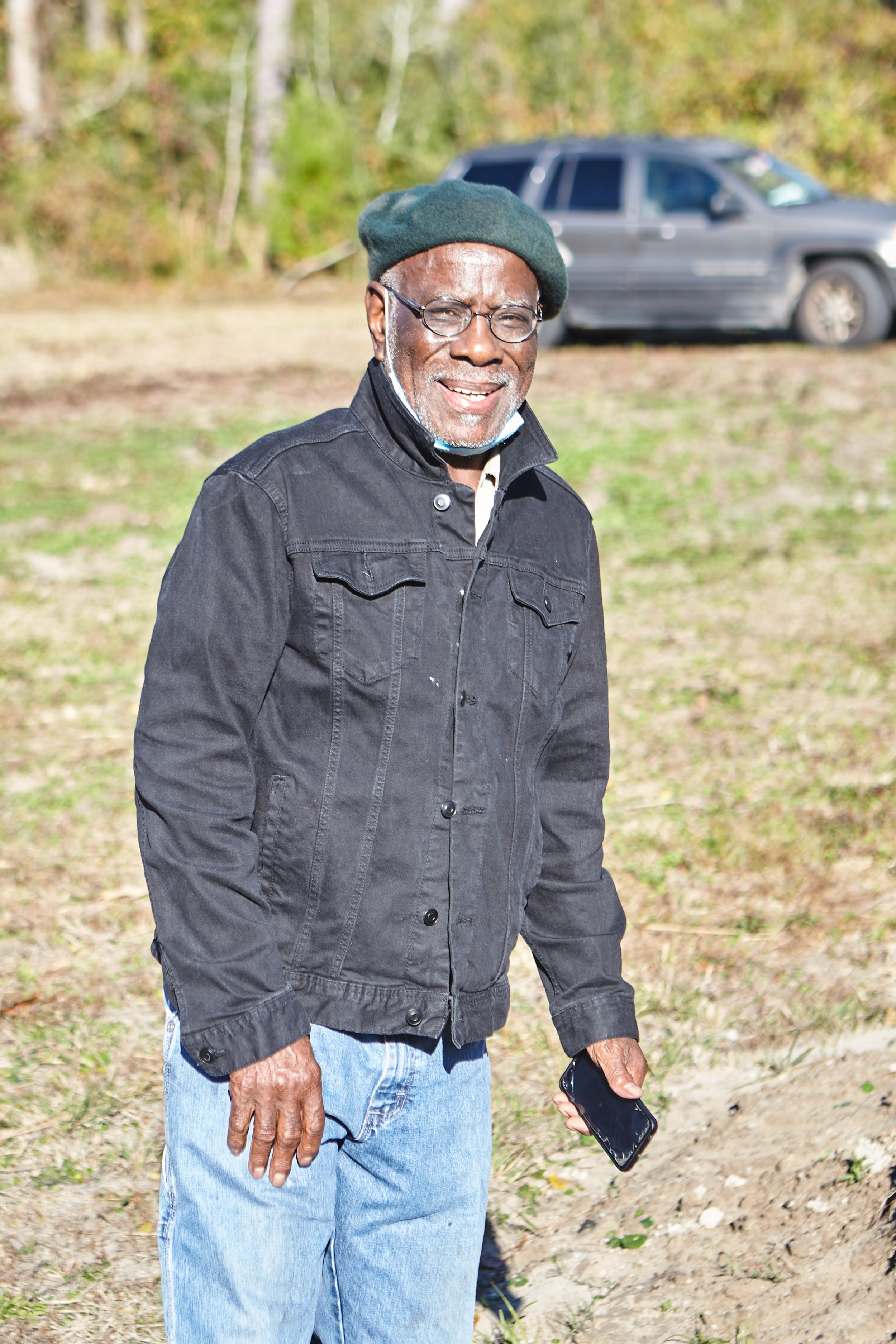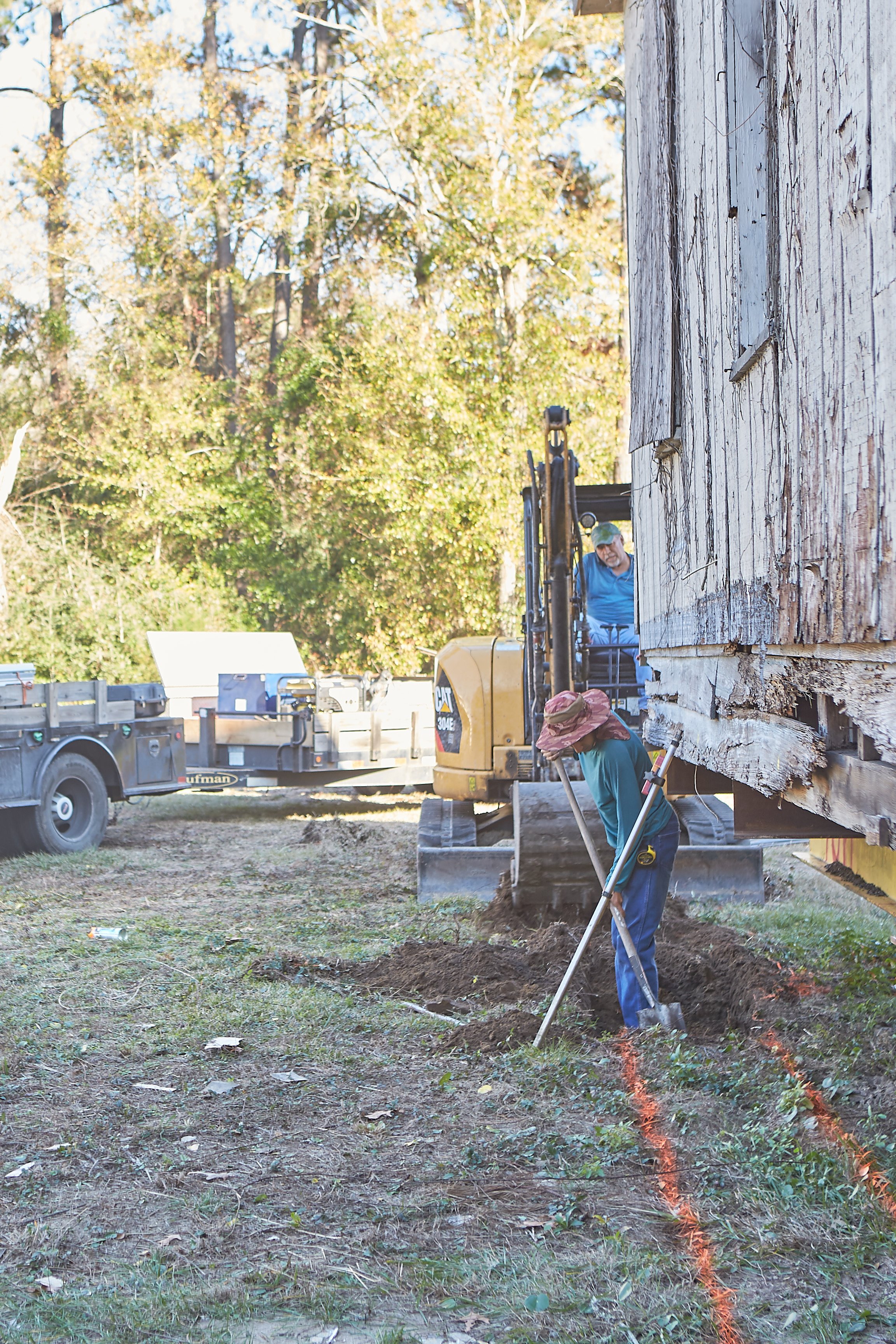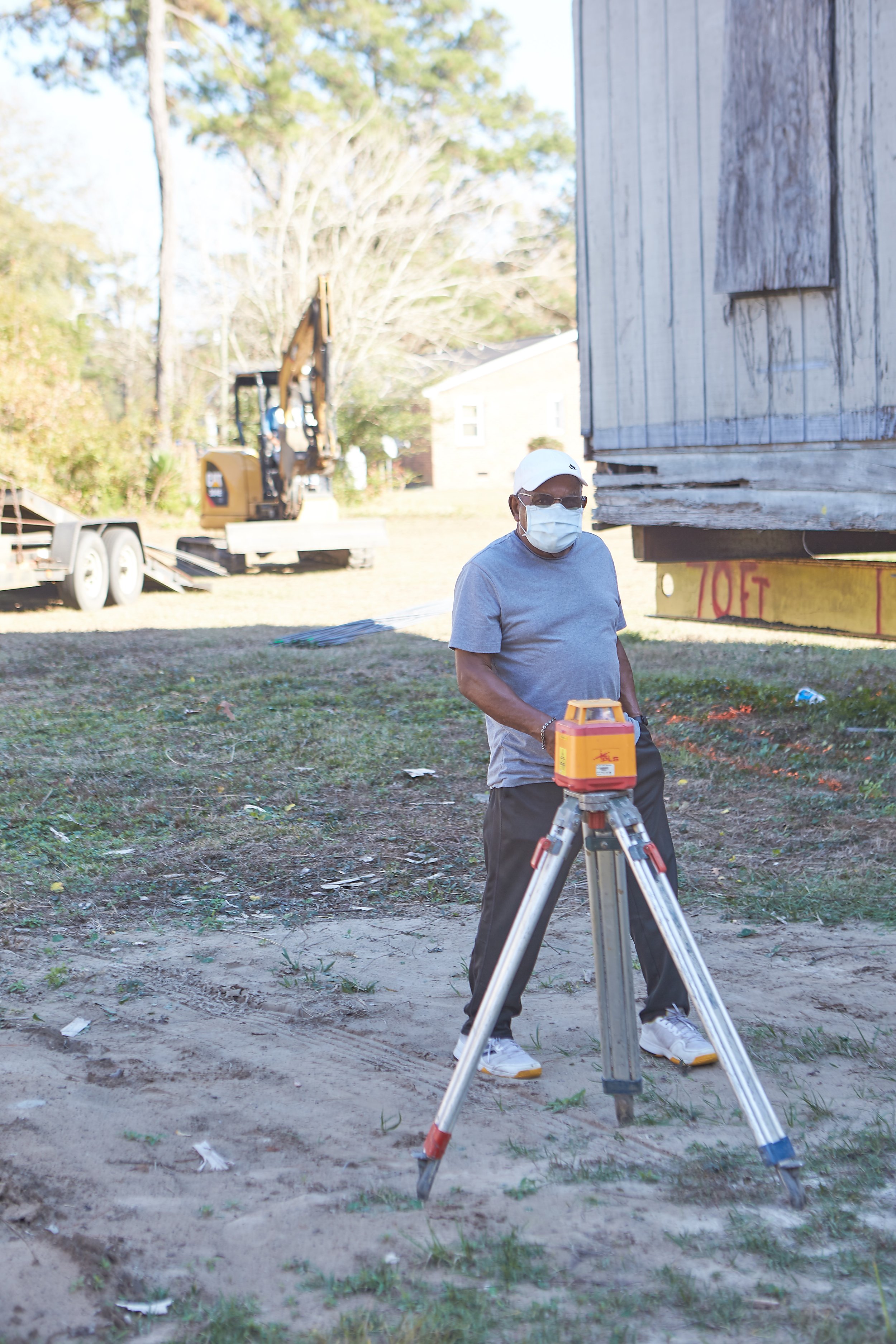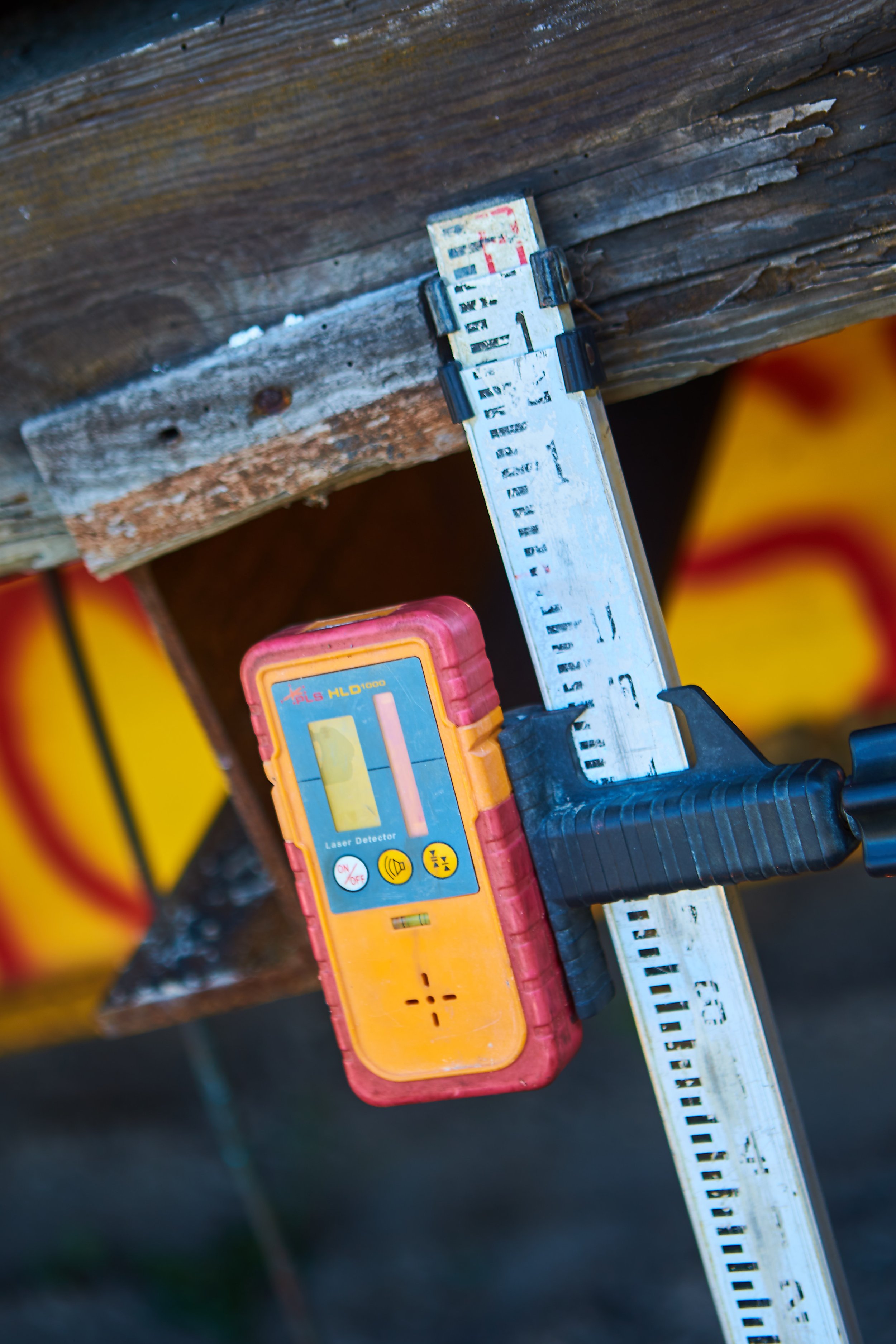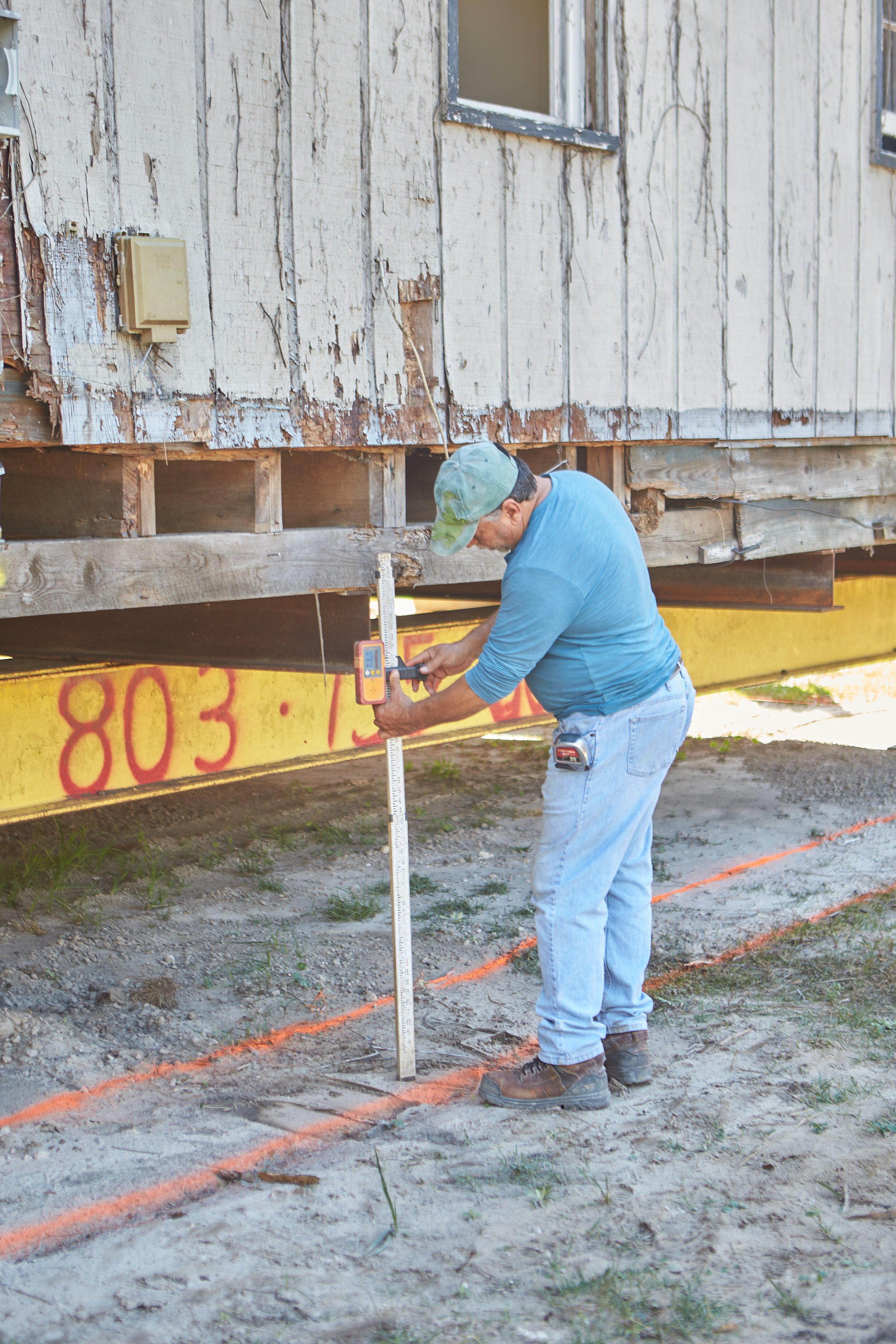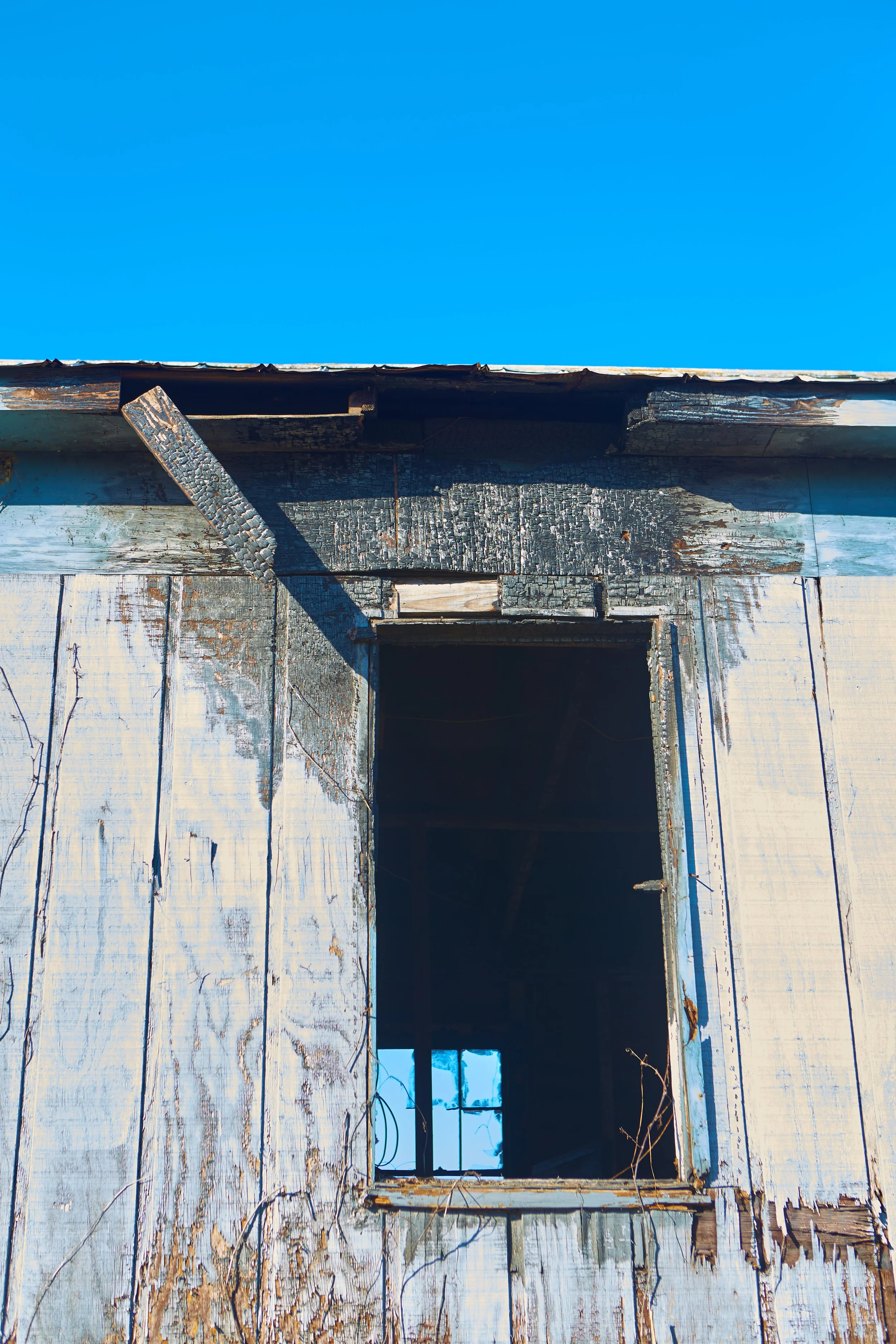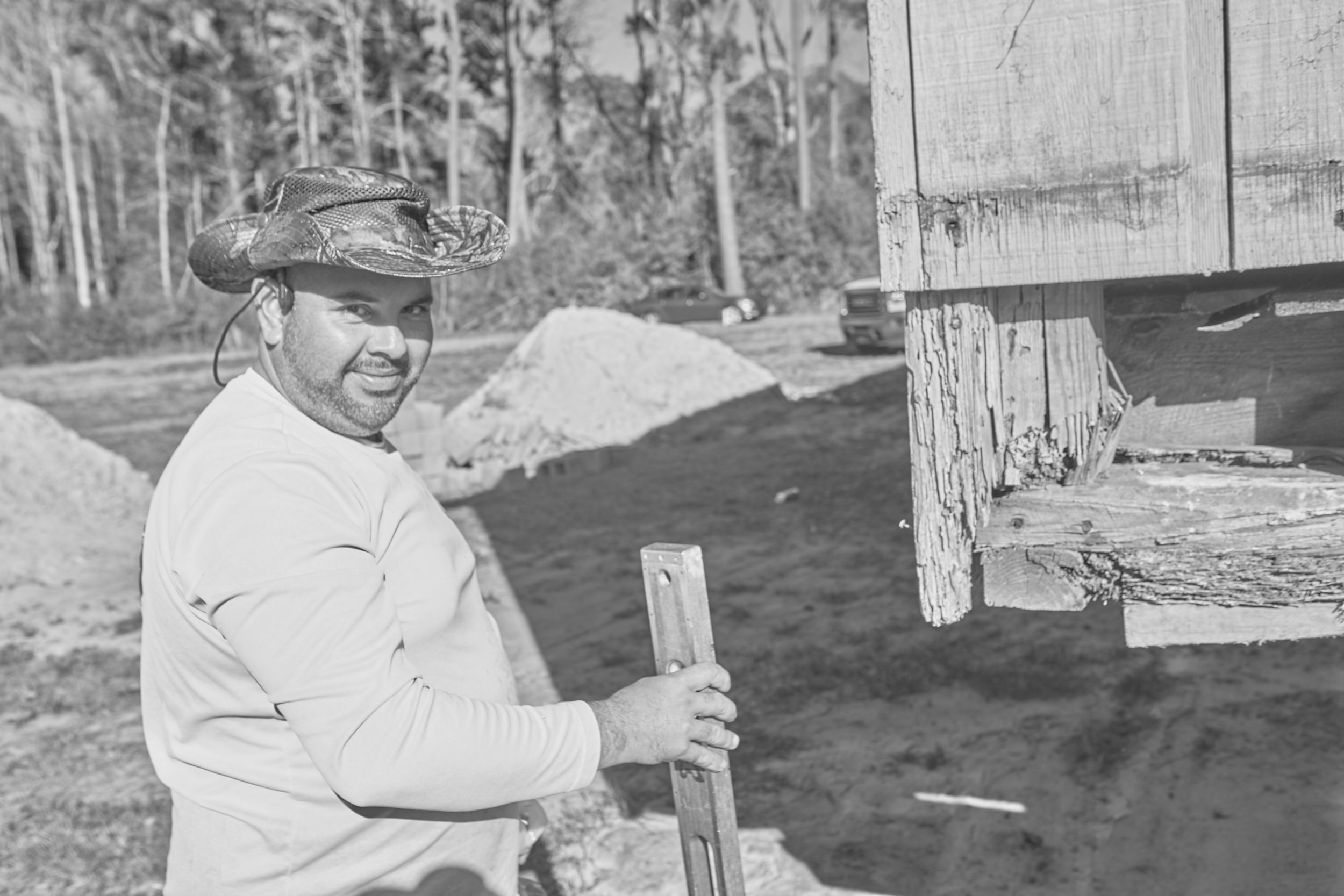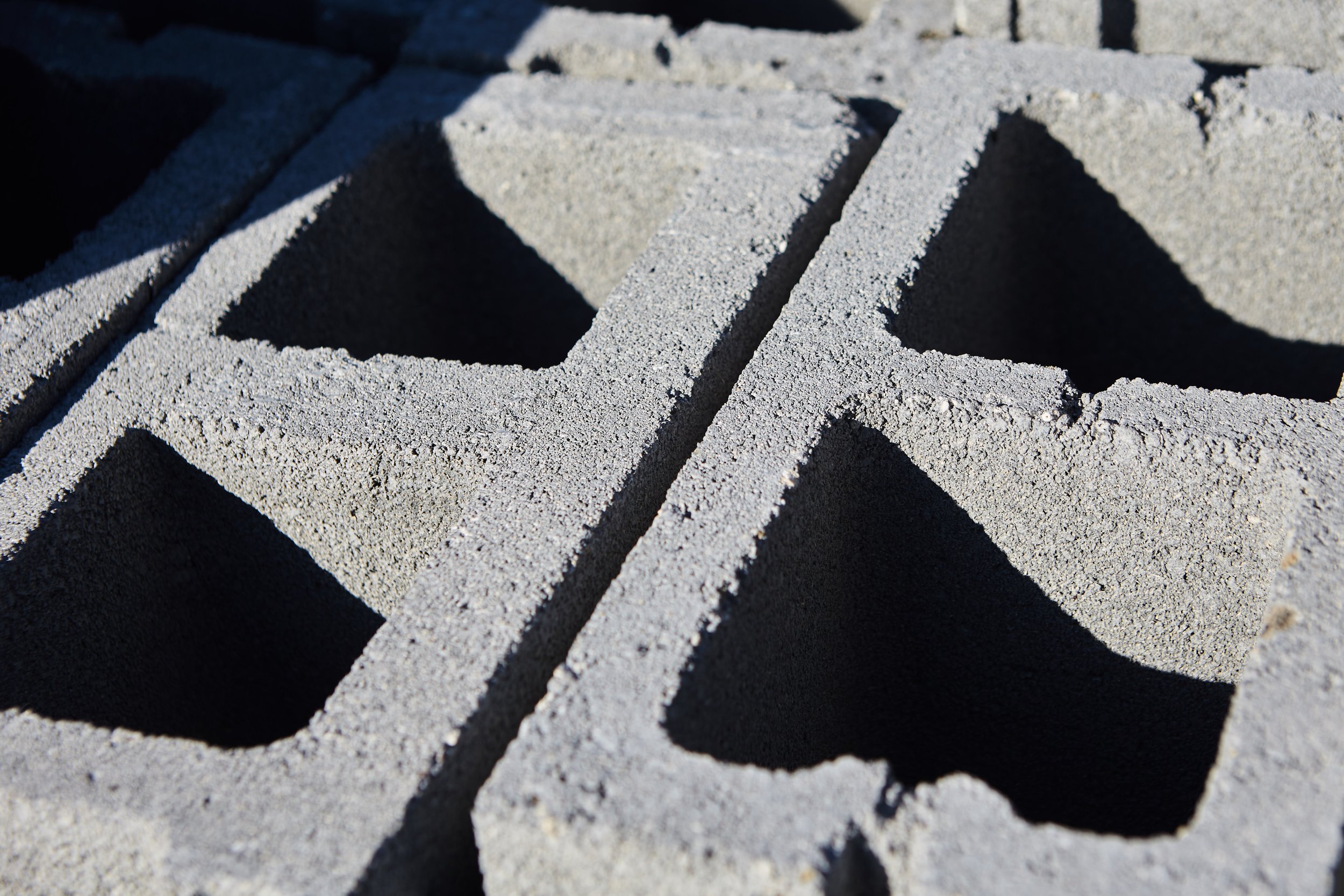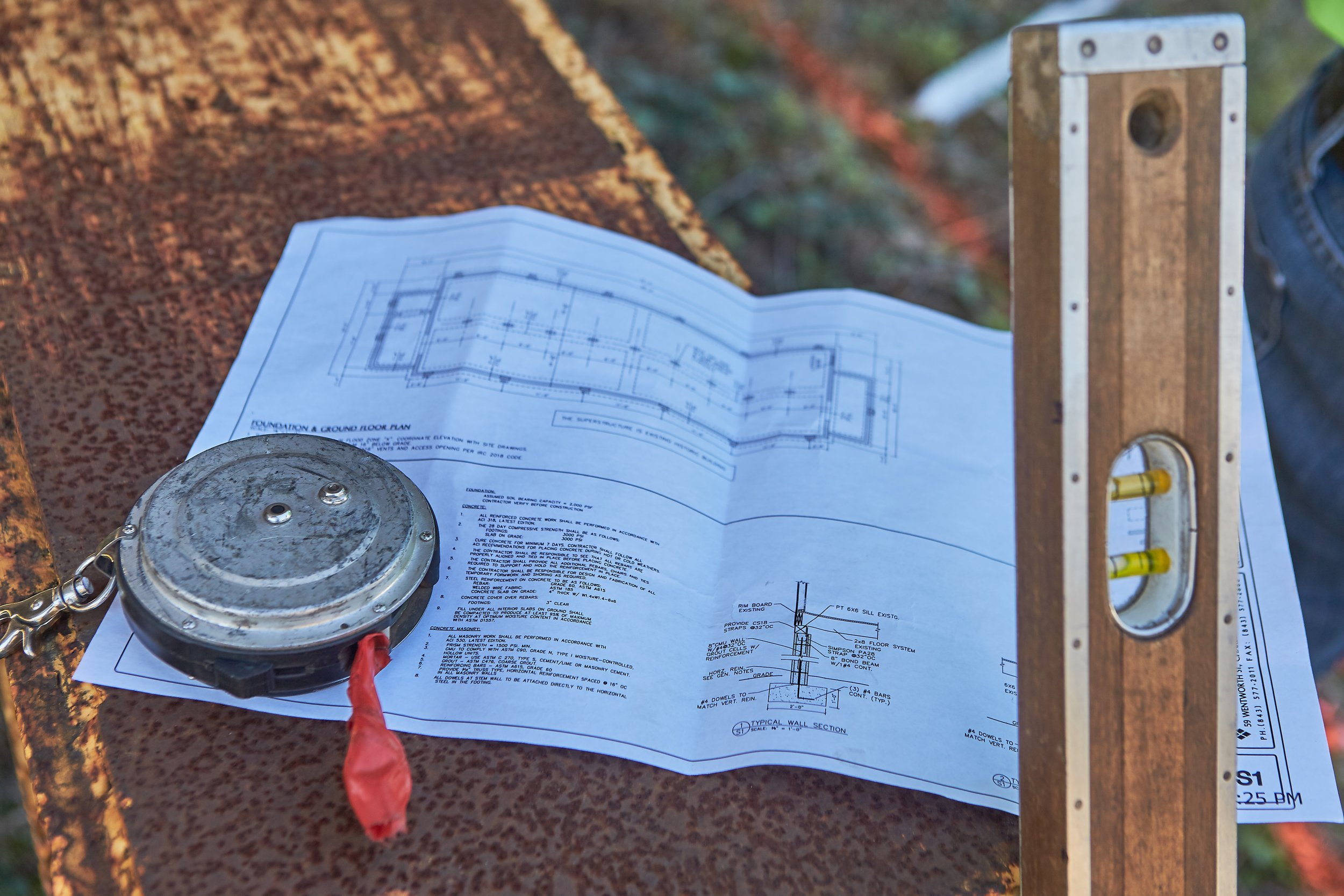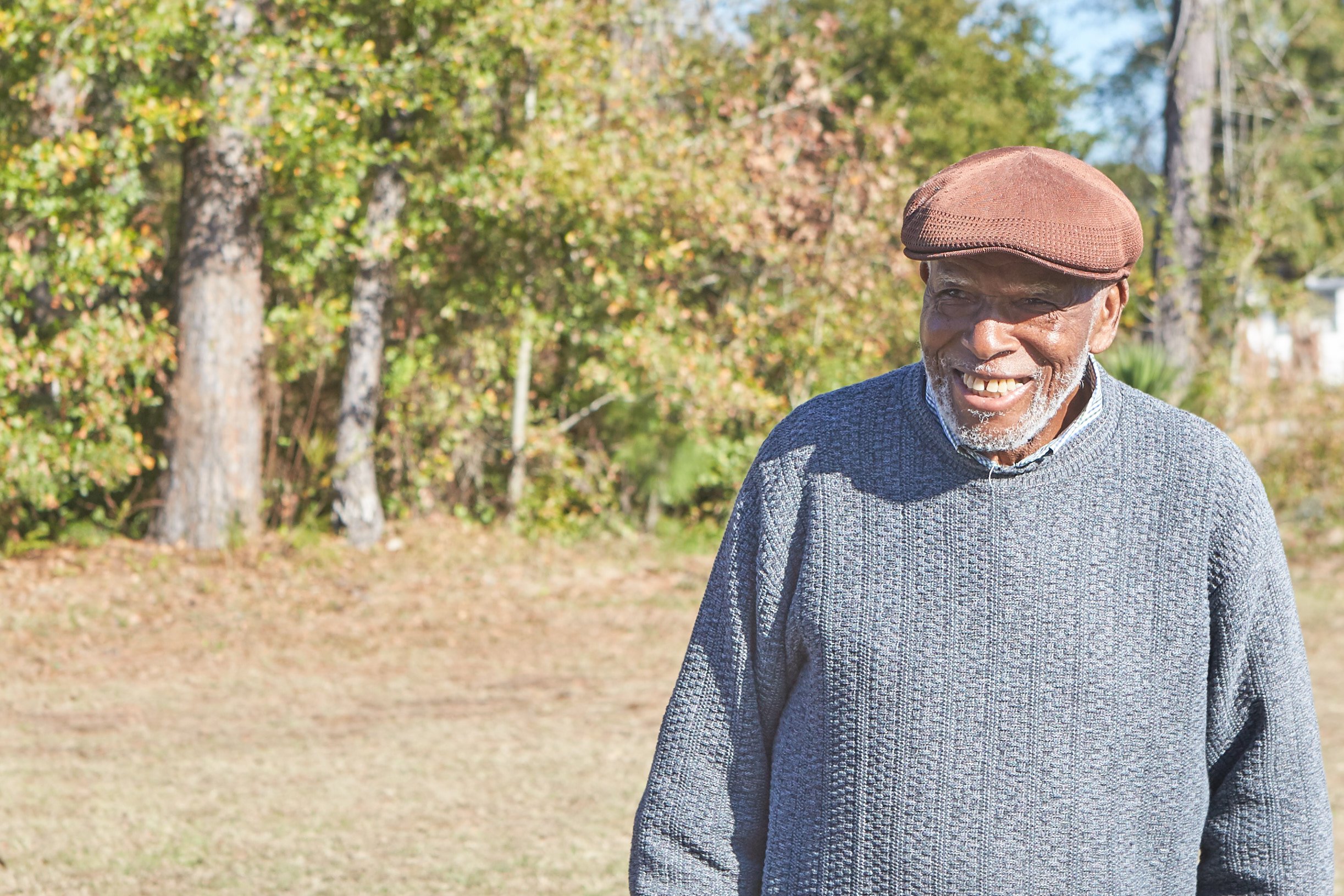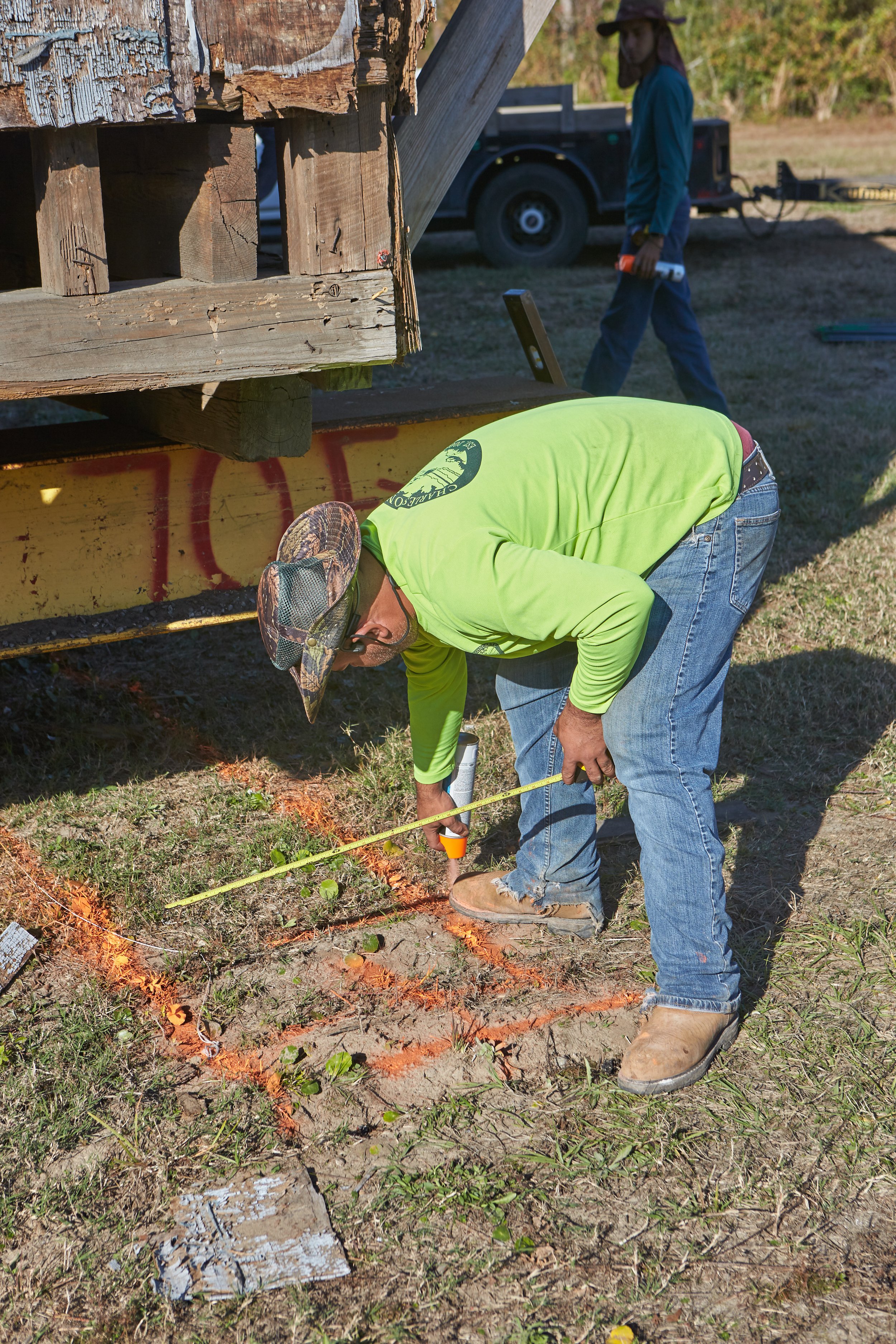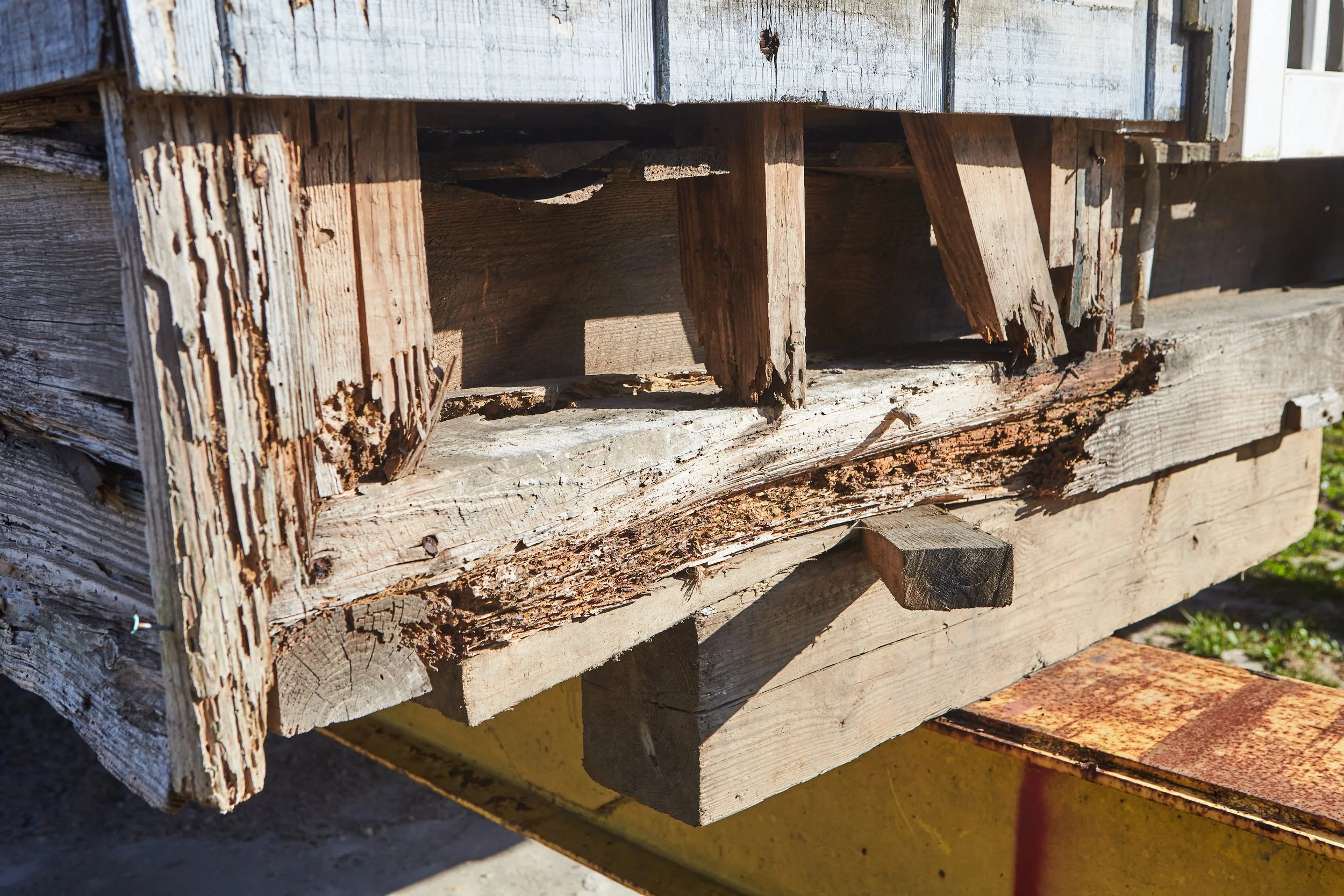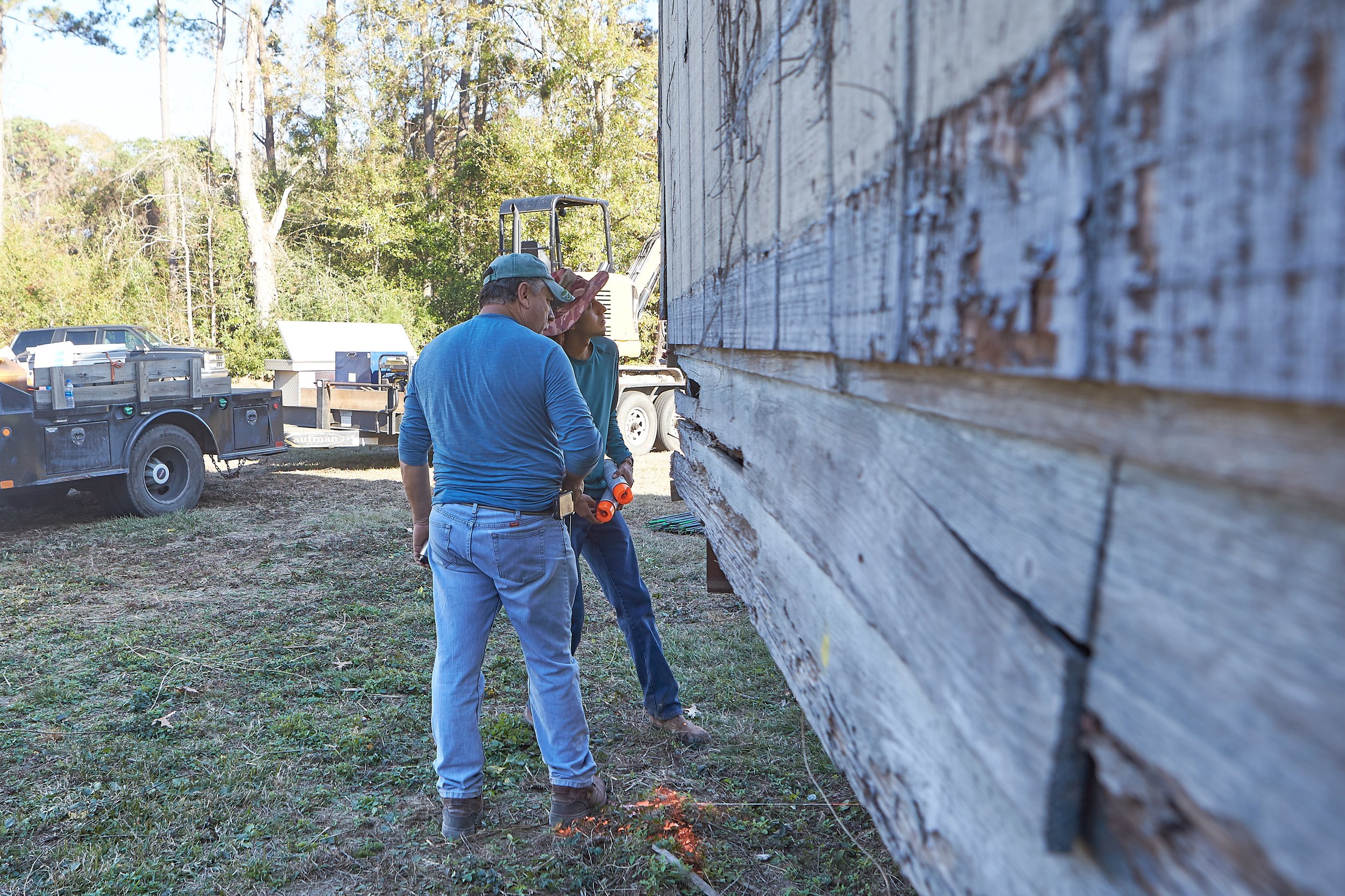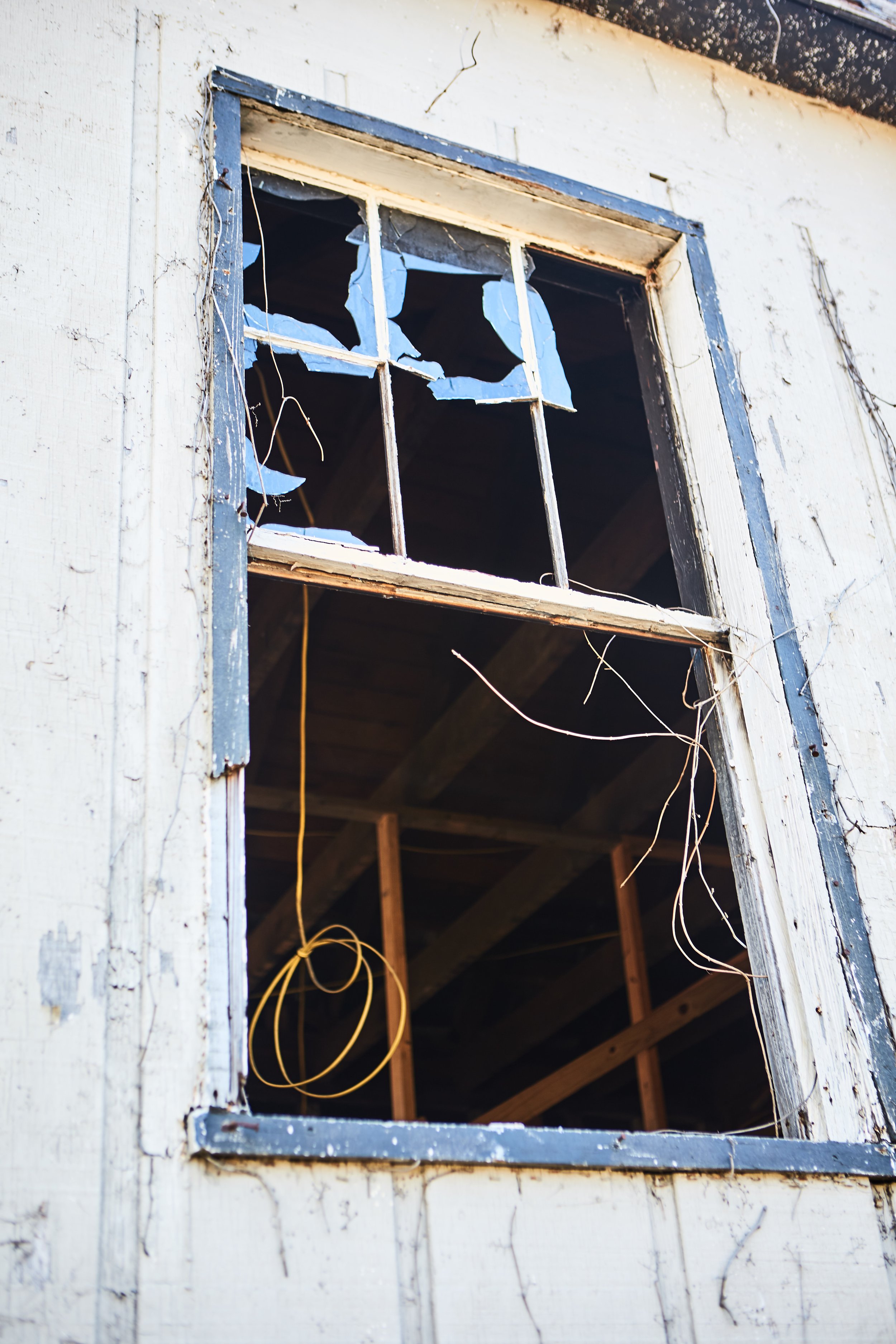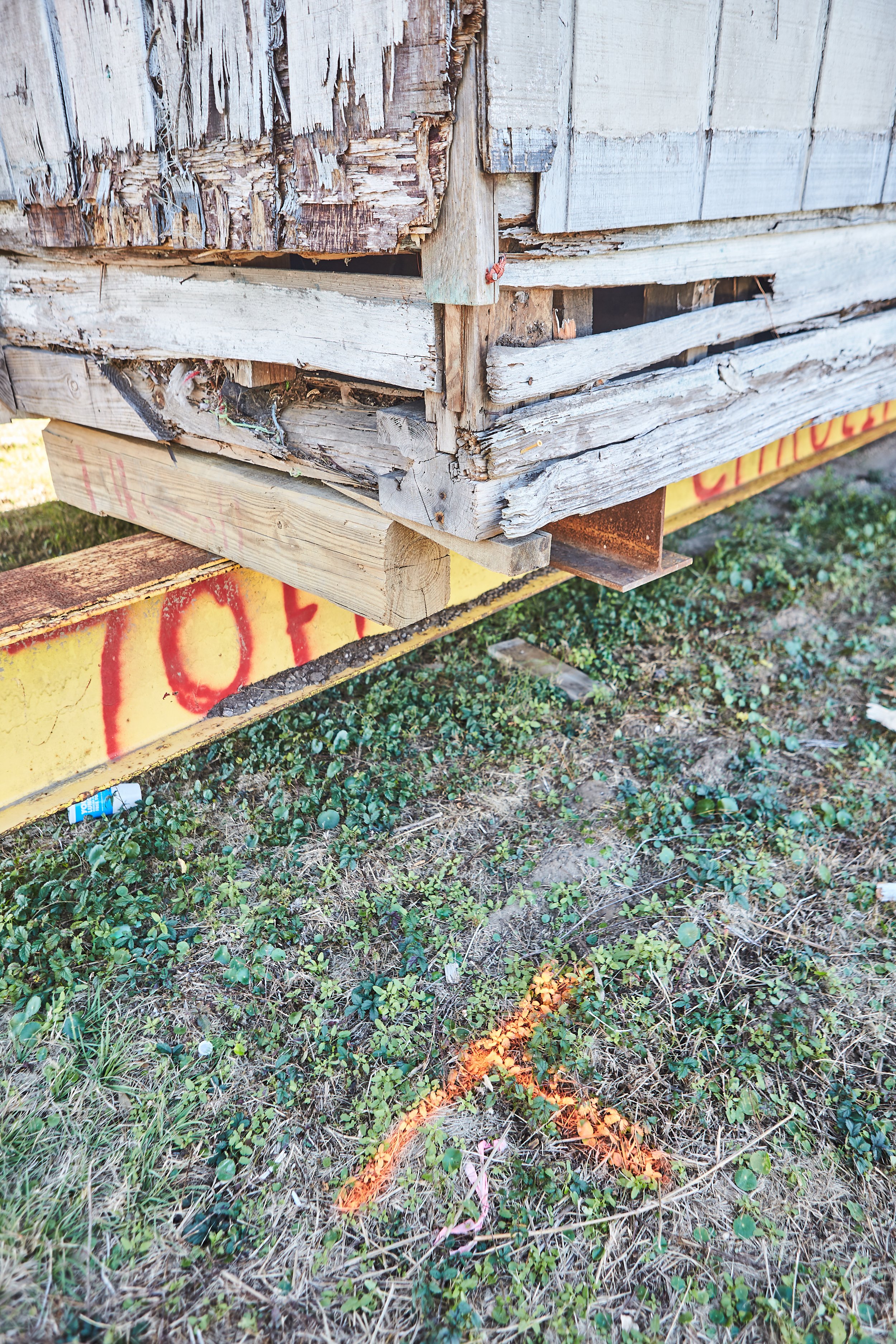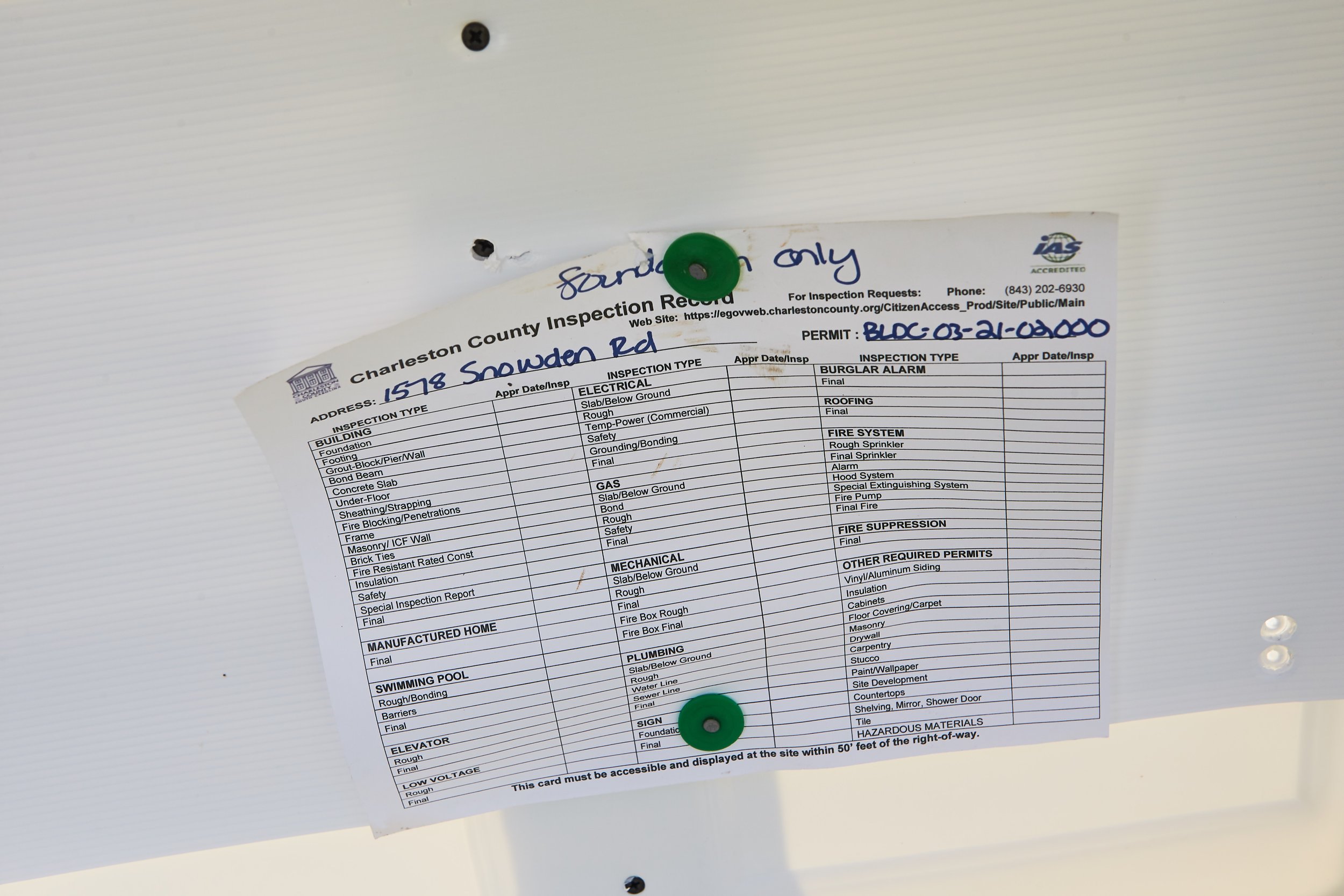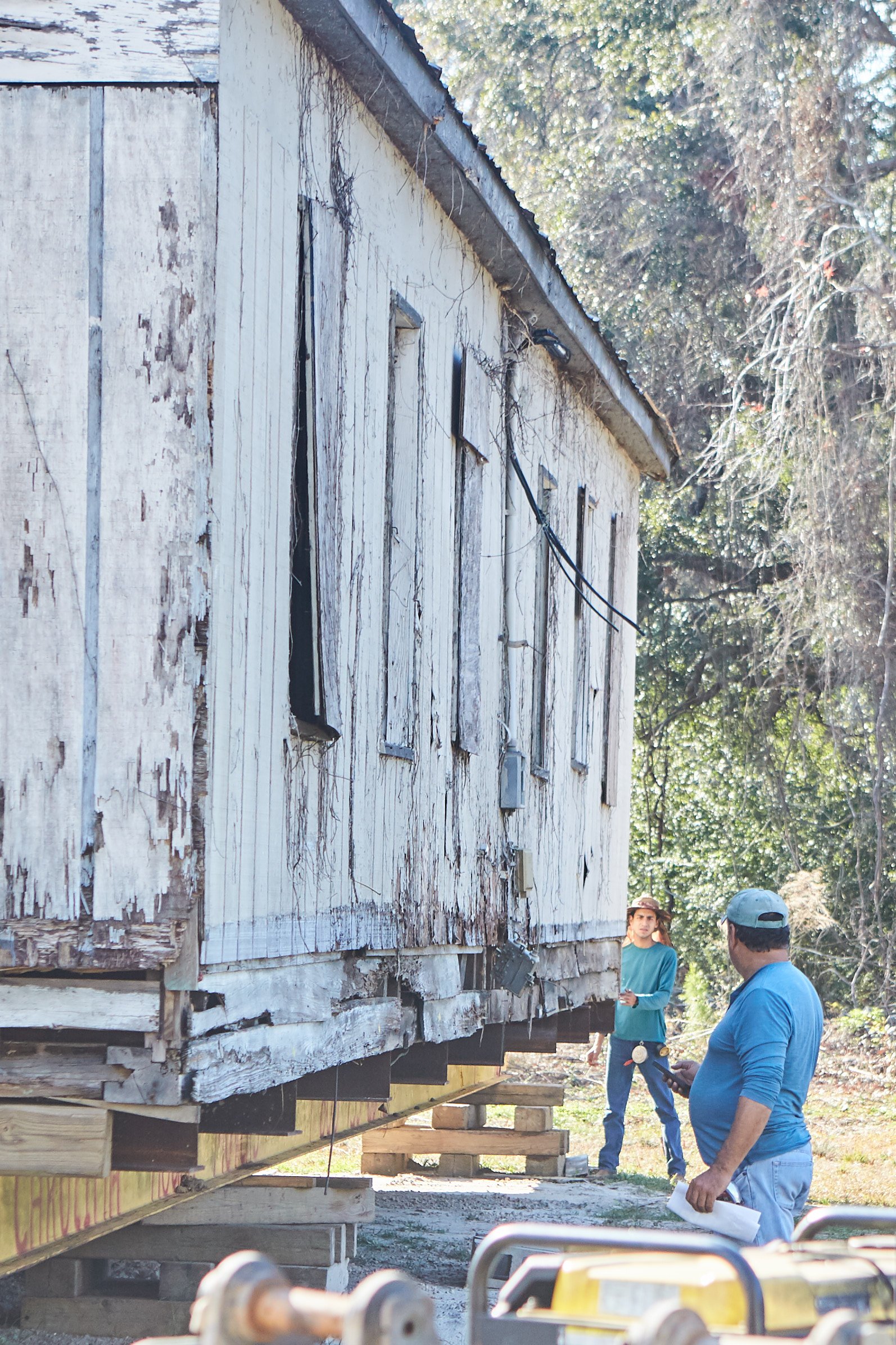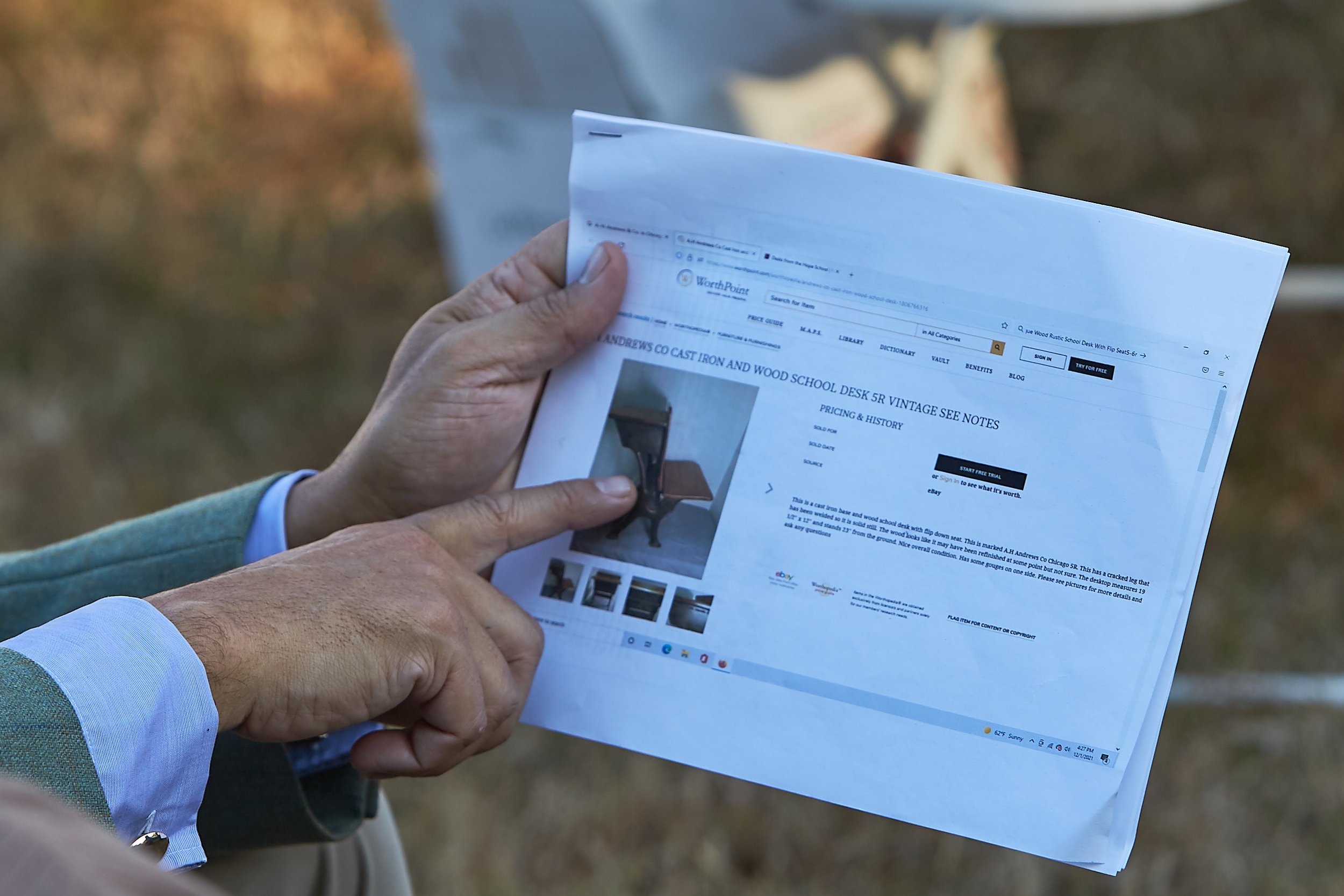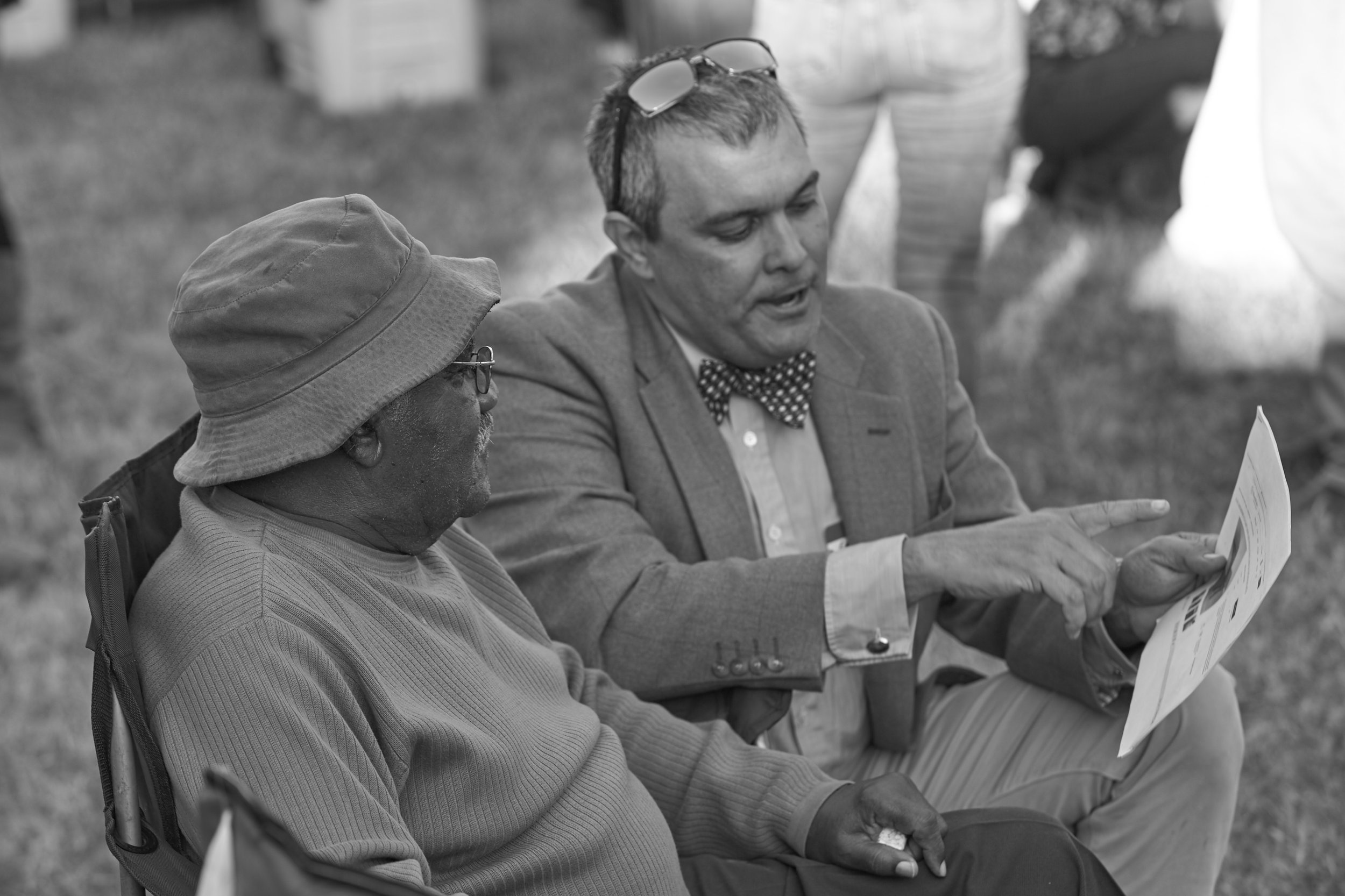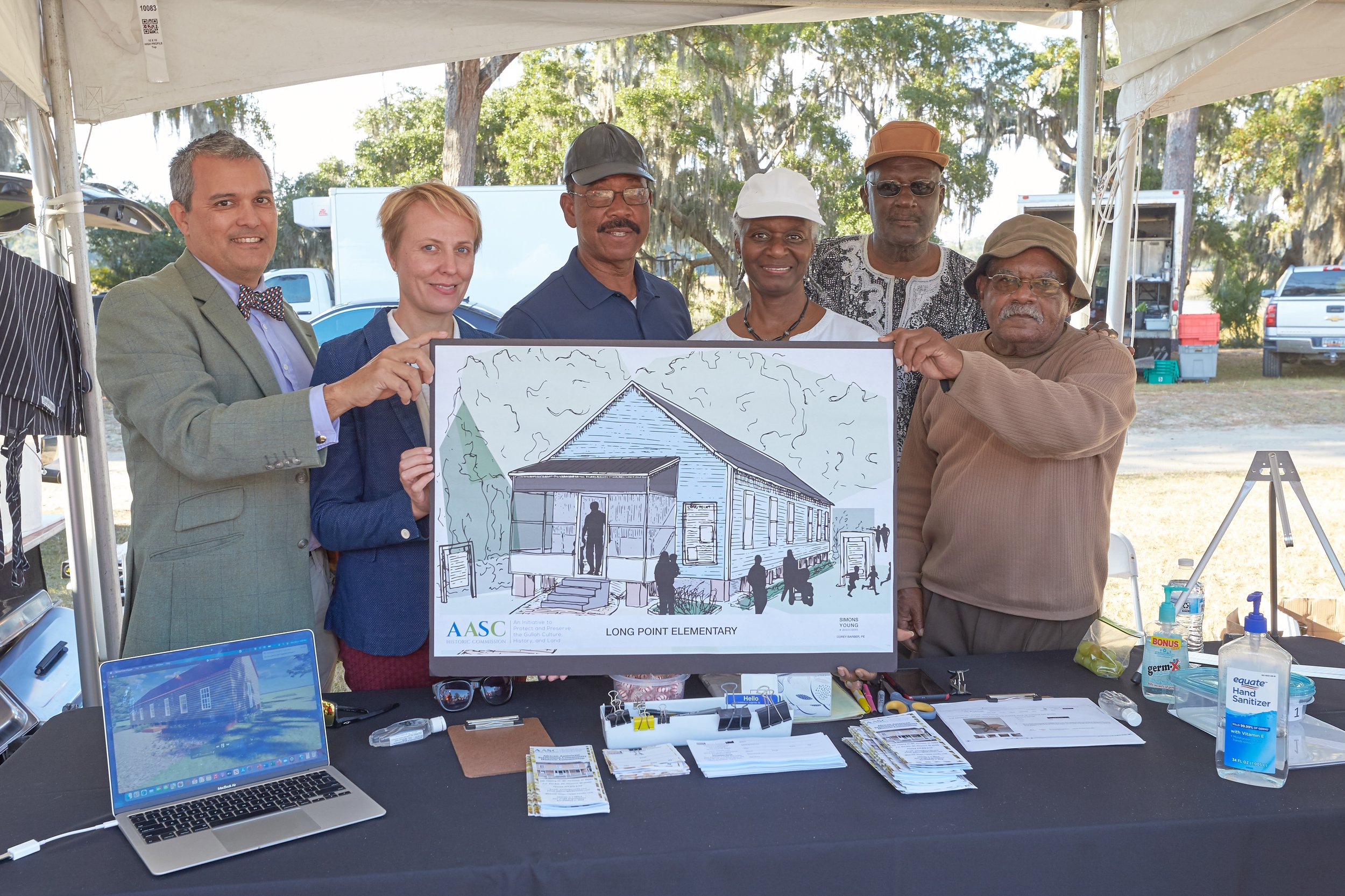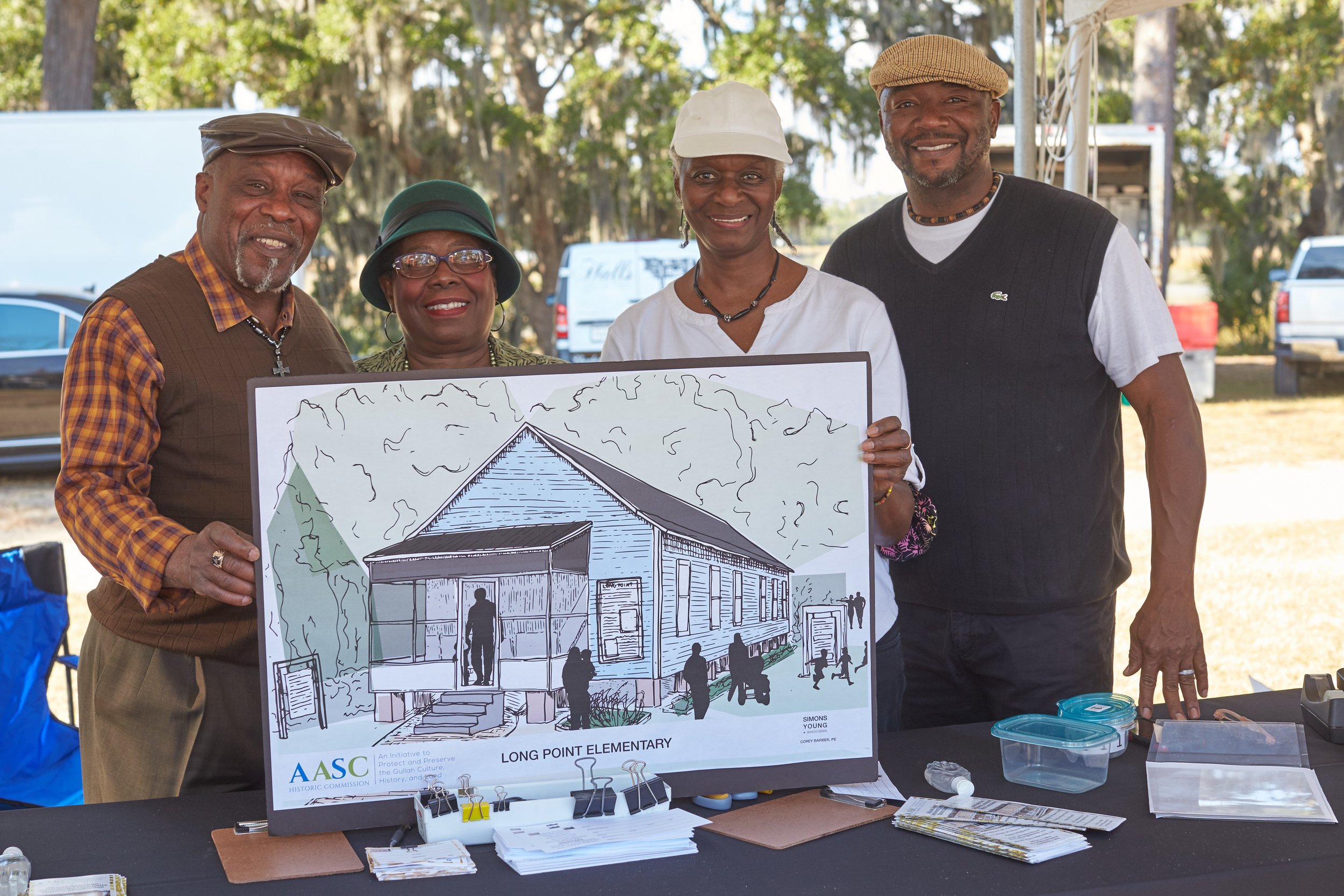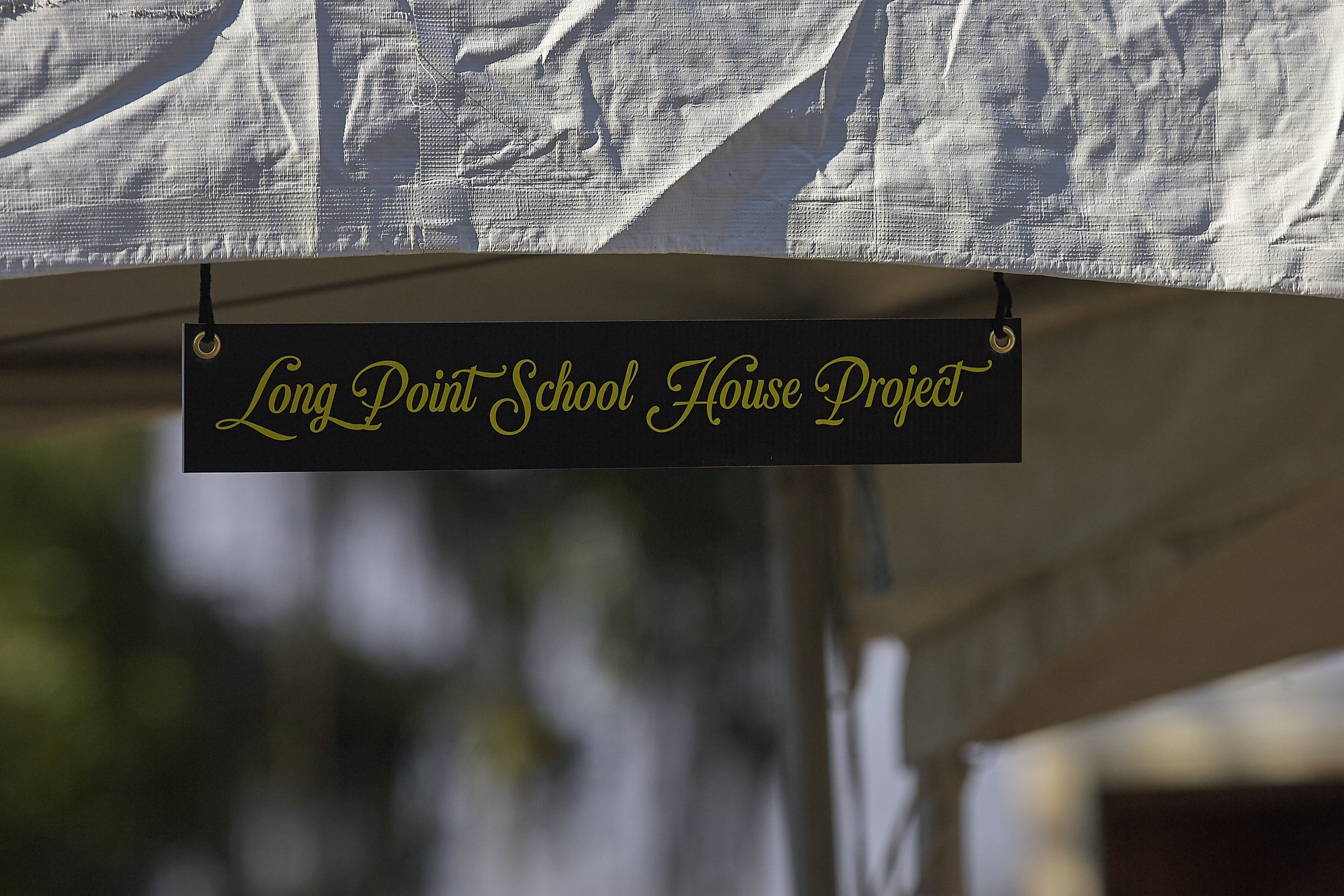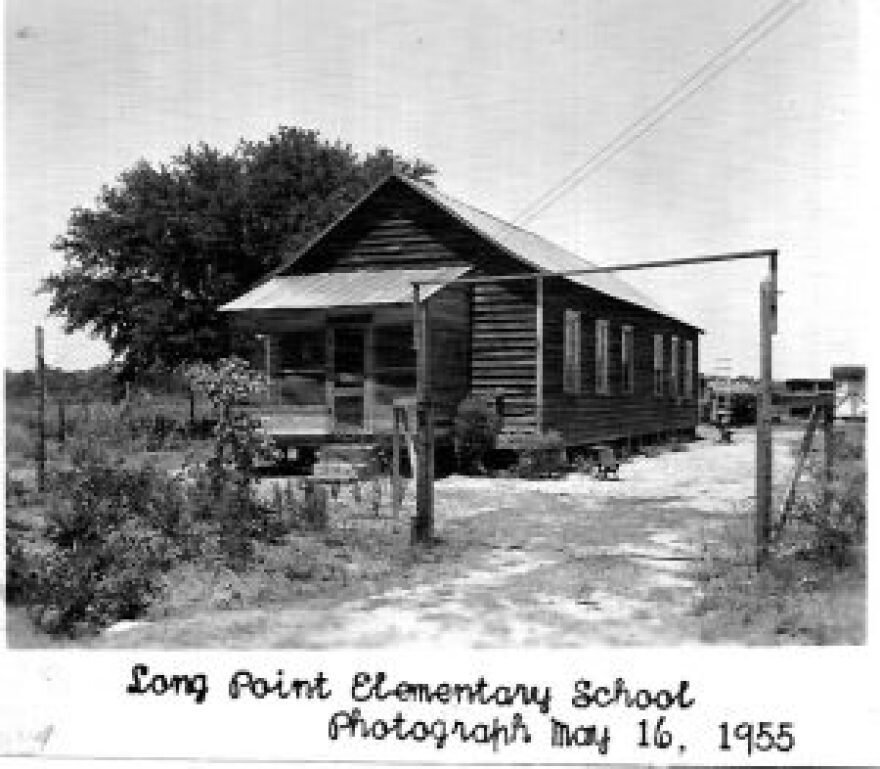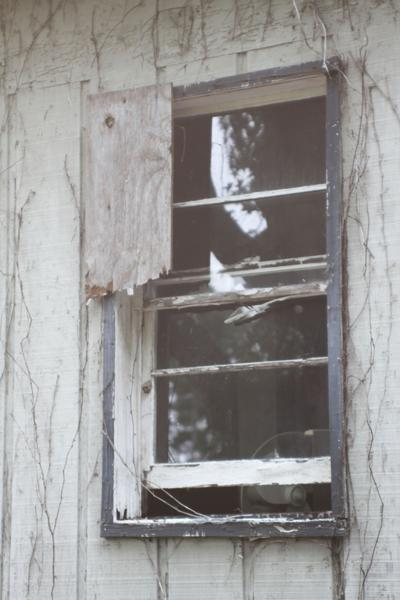Long Point schoolhouse
January 4, 2022
Long Point Schoolhouse Work Pictures
Photos by Harold Horlback
NOVEMBER 5, 2021
South Carolina Public Radio: What We Can Learn From Saving A Historic African American Schoolhouse
By Victoria Hansen
It is a strange sight for sure.
A century old schoolhouse atop a trailer wobbles down a paved road, dodging power lines and excited onlookers on its way to a prominent new home in the post-slavery, African American settlement community it once served.
“You know, this schoolhouse used to be on what we call the edge of the neighborhood,” says Vera German.
“We didn’t venture that far when we were kids because that was kind of the limits back in the day.”
German’s father attended Long Point Elementary School which opened in 1904 to educate Black children during the Jim Crow era. The property she remembers was sold to developers leaving the historic schoolhouse in danger of being demolished.
But four years ago, the Snowden community came together to save the school from abandon near a Waffle House off I-526.
Located in an unincorporated area of Mount Pleasant just outside Charleston, Snowden is one of several areas where slaves freed after the Civil War bought land, farmed and raised families. Many of their descendants still live there, not far from Boone Hall Plantation.
But communities like Snowden are quickly disappearing and the Long Point Schoolhouse is believed to be one of the last in the area.
“Every obstacle, every hurdle has been worth it,” says John Wright, the President of the African American Historic Settlement Community Commission. It’s mission is to preserve and protect communities like Snowden.
Wright says saving the school has not only been expensive but complicated. There have been all kinds of issues from permits, to land ownership, even weather.
But perhaps it’s only fitting for a school built at a time when Black people were still being denied an education and those who did receive schooling were segregated.
“In 1904, some of their obstacles were Jim Crow,” says Wright. “Some of their obstacles were this predates Brown versus the Board of Education.”
Joseph Palmer grins as he watches the old schoolhouse settle- in to its new address in Snowden.
Palmer was 7 years-old and the first grade when he attended as one of the last students at Long Point Elementary. The school closed in 1953 when a new, larger one opened bringing Black children together from other communities, although still segregated.
“That was an excitement,” says Palmer. “Kind of scary too. Like wow, we have to make this adjustment to a whole new world.”
Palmer remembers strange little desks in the once one-room schoolhouse converted to two by the time he attended with students grades first through sixth.
“In the back, they had outhouses, one for girls and one for boys,” says Deborah Holmes Gambell.
Gamble did not attend Long Point Elementary School, but her great-grandfather bought the schoolhouse and some of the previous property not long after it opened. The school stayed in the family even after it closed. They renovated and lived in it.
“If you take the old siding off, the original wood is under the old siding,” says Mike Holmes.
The Holmes family has donated the historic schoolhouse to be restored into a cultural education center. Fundraising for that effort is now underway.
“This is very important. Let’s keep this alive,” says Reverend Arthur Pinckney who attended the school for three years.
Pinckney says he is grateful for the education he received even though he later learned it was not the same as what white children were being taught at the time. He remembers white children on school buses pelting Black children as they made their long walk to school.
Pinckney is relieved to now have the historic schoolhouse he feared would be lost, closer to his Snowden home.
“Because there is nothing here that connects us to history no more than the Snowden community.”
A community that persevered despite the oppression of slavery, segregation, even development has revived a reminder of hope; hope for a better life through education.
Joseph Palmer grins as he watches the old schoolhouse settle- in to its new address in Snowden.
Palmer was 7 years-old and the first grade when he attended as one of the last students at Long Point Elementary. The school closed in 1953 when a new, larger one opened bringing Black children together from other communities, although still segregated.
“That was an excitement,” says Palmer. “Kind of scary too. Like wow, we have to make this adjustment to a whole new world.”
Palmer remembers strange little desks in the once one-room schoolhouse converted to two by the time he attended with students grades first through sixth.
“In the back, they had outhouses, one for girls and one for boys,” says Deborah Holmes Gambell.
Gamble did not attend Long Point Elementary School, but her great-grandfather bought the schoolhouse and some of the previous property not long after it opened. The school stayed in the family even after it closed. They renovated and lived in it.
“If you take the old siding off, the original wood is under the old siding,” says Mike Holmes.
The Holmes family has donated the historic schoolhouse to be restored into a cultural education center. Fundraising for that effort is now underway.
“This is very important. Let’s keep this alive,” says Reverend Arthur Pinckney who attended the school for three years.
Pinckney says he is grateful for the education he received even though he later learned it was not the same as what white children were being taught at the time. He remembers white children on school buses pelting Black children as they made their long walk to school.
Pinckney is relieved to now have the historic schoolhouse he feared would be lost, closer to his Snowden home.
“Because there is nothing here that connects us to history no more than the Snowden community.”
A community that persevered despite the oppression of slavery, segregation, even development has revived a reminder of hope; hope for a better life through education.
https://www.southcarolinapublicradio.org/2021-11-05/what-we-can-learn-from-saving-an-historic-african-american-schoolhouse
An historic schoolhouse being moved in the post-slavery, African American settlement community of Snowden near Mount Pleasant on October 15, 2021. Built to educate Black children in 1904, the old Long Point Elementary School will be restored as an cultural education center.
The Long Point Elementary School as photographed in 1955 three years before it closed to make way for a bigger school for Black children.
““This is very important. Let’s keep this alive.”
”
AUGUST 4, 2021
Moultrie News: Historic Schoolhouse Finally Finds A Permanent Home
By Catherine Kohn
The struggle to move, preserve and use the historic Long Point Road Schoolhouse has been a long one. The Long Point Road School was originally built in 1904 with one room to provide an education for African American children who were forbidden from attending segregated schools. A second room was added later. The schoolhouse, which sits hidden from the road just off the I-526 entrance ramp, was quite literally on wheels in December 2019 and was ready to be placed on a site at the Snowden Community Center when the plans fell apart.
But that was then. The morning of August 4 brought an announcement from the African American Settlement Community Historic Commission that should result in the schoolhouse finally resting in a permanent home. John Wright, president of the commission’s board, stood with members of the commission, along with council member Kathy Landing, to announce the successful purchase of land off Snowden Road that will become a permanent site for the schoolhouse. Moving date is September 30.
Wright said he spoke with Representative Mark Smith, who is the state representative for District 99. “Mark has seen the site – has seen the location where the school is going to be moving to – and he’s 1,000 percent supportive of the project.”
“It gives us an opportunity as African Americans to preserve an African American site,” Wright said. “So we will not only own the land, we will own the site as well
as the land,” referring back to various plans to locate the schoolhouse on public property. He said he is “looking forward to it becoming a cultural education center for public use. “We’re going to tie this school in Snowden community to the Boone Hall Plantation as well as the Charles Pinckney historic site, which is less than a mile from it. So hopefully, we’re going to bring some history to this building.”
Board member Thomasena Stokes-Marshall, who attended the school as a first-grade student, said she hopes the schoolhouse will eventually be a place that gathers the history of the school. A place that will become a “cultural educational entity to help educate and inform and make people aware of the history of that school and the significance of it. Where people like myself, can look back on it. Where I came from, people of my age category and my parents before me, where we all came from … not being able to attend a school with all people. We were segregated deliberately.”
“It’s important for the generations that come after me and ones that come after that, to be made aware of how it used to be … where we were forbidden. We were not allowed to engage in those opportunities, because we were considered less than because of the color of our skin,” Stokes-Marshall said.
Wright emphasized that the commission is working with “an abundance of partners.” He acknowledged the help of some of those partners and thanked the South Carolina Department of History and Archives, College of Charleston Architectural Review, Preservation Charleston, the National Park Services, Brockington and Associates, State Representative Mark Smith, the Gullah Geechee Corridor, and the International African American Museum.
“This is phase one. Phase One is the move,” Wright said.
The commission is continuing to raise funds for the restoration of the schoolhouse. Go to: https://www.gofundme.com/f/long-point-schoolhouse-restoration to contribute.
August 9, 2021
Moultrie News: Long Point Schoolhouse Restoration Project Reaches A Turning Point
By Catherine Kohn
Preserving history to inform the present can be a difficult undertaking. Just ask anyone on the African American Settlement Community Historic Commission. For more than four years the organization has attempted to move and restore the only remaining African American school east of the Cooper River – the Long Point Schoolhouse. Success, however, now appears to be within their grasp.
This early 1900’s building was an integral part of the Snowden Gullah-Geechee community created after the Civil War by freed enslaved men and women. During the Jim Crow era it served as a place where Black children could gain an education – something denied them by the segregationist policies of the times. The school began as a one-room school house, eventually expanding to two rooms. It was closed in 1953 after Jennie Moore Elementary School opened to serve African American children and became a residence for many years.
The Long Point Schoolhouse, hidden behind trees and brush just off the I-526 entrance ramp on Long Point Road in Mount Pleasant, sits raised on cinderblocks. An earlier plan involved relocating the schoolhouse to the grounds of the Snowden Community Center in December 2019 — a plan that fell through at the last minute leaving the historic school’s fate in limbo.
It became clear to commission members that placing the schoolhouse on public property would be problematic. Undeterred, the commission continued its mission to save the structure so it could become a cultural center for both the local and greater community. On August 4, John Wright, president of the organization, along with other AASC board members, publicly announced it had purchased land for the building’s relocation within the Snowden community and had set a moving date of September 30.
Michael Allen, a well-known historian who worked in the National Park Service for decades, has deep ties throughout the state with preservation organizations. He is acting as an advisor to the group. Allen said it is partnerships that make the difference in success.
Numerous partnerships and resources are already in place and the hope is to forge a bond with Boone Hall Plantation, Charles Pinckney National Historic Site, the International African American Museum and the City of Charleston Visitor’s Bureau.
Allen points to the success of the Historic Harrington School on St. Simon Island in Georgia as a model. That small schoolhouse was built in the 1920s and was the primary school for three African American communities on the island until the 1960s when schools finally desegregated. It became a day care center for a couple of years then fell into disrepair after being abandoned and was almost demolished. Through the efforts of community activists the building was fully restored and is now a landmark and cultural center that is used to educate and enrich both residents and visitors to the island.
“When I go to St. Simon’s I see it (restoration) works. I know it’s possible,” Allen said of the project. The new location for the Long Point Schoolhouse is “safe, secure and prominent,” Allen said, which is also a positive factor to achieve a successful outcome.
Former Town Council Member and community activist, Thomasena Stokes-Marshall, is on the commission’s board. She attended the school in 1948 as a kindergartner when there were only dirt roads. She would ride her bike or walk to school. “They taught English. They taught math. Especially math. I remember that. I was not a good math student. And I remember coming home with work I needed to do and trying to figure it out. And my dad was a real stickler for that,” said Stokes-Marshall, smiling at the memory.
“We’re looking at that school to be in place within the next, in my mind, I’d say a year and a half to two years. We’re working with Brockington Associates to help develop the interior, and the program contents and education and all of that,” she said.
Finding state, local and federal grants are a vital part of the process, as well as community fundraising. Wright said the early estimate for the restoration was set at $200,000. The costs could potentially be more, but that remains their initial fundraising benchmark. He said they will “look at every grant possible” and search for every potential donor to achieve their goal of restoring the schoolhouse.
To donate to this restoration effort go to: https://www.gofundme.com/f/long-point-schoolhouse-restoration.
John Wright said the initial fundraising benchmark for the restoration of the Long Point Schoolhouse is $200,000.
August 2, 2021
The 1904 Historic Long Point Schoolhouse Move Press Release
OCTOBER 5, 2018
LIVE 5 NEWS: SNOWDEN COMMUNITY WORKING TO RAISE MONEY FOR HISTORIC SCHOOL HOUSE RENOVATIONS
By Kolbie Satterfield
The Snowden community is working to raise money to move and restore the Long Point Road School House.
A fundraising event on Friday night could give them fundraising momentum.
Long Point Road School House is one of the last remaining Jim Crow buildings in South Carolina and the last African American school east of the Cooper.
A developer brought the property the school currently sits on and is giving the community time to move the school so they can preserve it.
Snowden Community President Freddie Jenkins said it would cost around $200,000 to move and restore the school house and turn it into a community education center.
He said their focus right now is raising $20,000 to $30,000 to get the school moved. He said once it’s at its new home they would try and raise the additional money and apply for grants to help with the expense.
Jenkins said in the first few months of raising money, they have raised $10,000.
A former Long Point Road School House student said she hopes that number doubles in Friday night’s event.
“I’m hoping we can raise $10,000 more. That would be a blessing,” Mary P. Lawerence said.
Lawerence said for her, having the school restored would bring opportunities to teach future generations about the past.
“It would be amazing for them to see just how far we came,” Lawerence said. “It’s a journey.”
Her brother Rev. Arthur Pickney, and former classmate, agreed. He said it would be historical to reopen the only school they had at the time.
“We see what my parents and grandparents went through to get educated and I wanted to educate myself and a lot of us went to college after too,” Pickney said.
Pickney said he went to Long Point School House until desegregation and said many of his former classmates continued through high school and went on to college and the military.
That’s why he said opening it back up would bring history back to life.
“I think it’d be a shining light for the community for us to do something like this together,” Pickney said.
The Long Point Road School House event is Friday, Oct. 5 from 6 p.m. to 9 p.m. at Seacoast Church on Long Point Road.
The suggested donation for the event is $25. The fundraising event includes Gullah cuisine, music, and honoring former students of Long Point Road School House who still live in the Snowden community.

